Geography Notes
Essay on watershed management | conservation | resources | geography.
ADVERTISEMENTS:
Here is a compilation of essays on ‘Watershed Management’ for class 7, 8, 9, 10, 11 and 12. Find paragraphs, long and short essays on ‘Watershed Management’ especially written for school and college students.

Essay on Watershed Management
Essay Contents:
- Essay on the Importance of People’s Participation in Watershed Management
Essay # 1. Introduction to Watershed Management:
Tree cover has been depleted, soil erosion has increased, water table has gone down, severity of drought increased and ecological degradation of drylands is greater than few decades ago. Degradation of environment in drylands is basically attributable to the increasing biotic pressure on the fragile ecosystem in the absence of appropriate management practices to augment and conserve the land and water resources.
There are outstanding examples of success at Religon Sidhi and Adgaon in Maharashtra, Kabbalnal and Mittemari in Karnataka and Jhabue in Madhya Pradesh, all of which show that dryland agriculture can be remunerative. It is in this context that watershed management assumes significance.
A Watershed can be defined as an independent hydrological unit. It is a drainage basin or catchment area of a particular stream or river. In simple terms, it refers to the entire upstream topography around a defined drainage channel which feeds water to the lands below. A watershed may vary from a few hectares to several thousands of hectares.
In other words, watershed is drainage area on land surface from which runoff from precipitation reach a particular point called common outlet. Simply, it is a land surface bounded by a divide which contributes runoff to a common outlet.
Watershed is a continuous area whose runoff water drains to a common point, so that it facilitates water harvesting and moisture concentration. A river basin is the largest watershed that can be imagined but for the purpose of dryland agricultural development the areas chosen are usually around smaller streams and are denoted as mini or micro-watersheds of about 500 ha, equivalent to more or less the average area of a village.
Watershed development refers to conservation, regeneration and judicious use of all the resources—natural (land, water, plants and animals) and human within a particular watershed. Watershed management tries to bring about the best possible balance in the environment between natural resources and human and other living beings.
Watershed management is a holistic approach which aims at optimising the use of land, water and vegetation in an area to deviates drought, moderate floods, prevent soil erosion, improve water availability and increase fuel, fodder and agricultural production on a sustained basis.
In the past, a number of approaches such as farm-family approach, component-wise approach and community approach have been suggested for translating the watershed approach into development programmes.
But, it was realised that development of dryland requires a holistic approach for overall improvement in the natural resource base and development of land based on crop suitability. Watershed programmes look simple but are often quite complex.
Limited success of watershed programme indicates that it was mainly due to:
1. Inadequate analysis of physical and socio-economic environment.
2. Indifference to farmers’ circumstances.
3. Strong bias towards crop production.
4. Lack of farmers’ involvement; and no flexibility in the technological options to suit farmers’ needs and their resources.
5. Lack of continuation of the soil and water conservation measures up to the point of financial support.
6. Poor acceptance of contour-based water conservation measures due to their disregard to ownership boundaries.
7. Antipathy of farmers to maintain structures like diversion drains, which cost money and resources to some farmers but benefited others.
8. Inadequate arrangement on social fencing to protect forestry and pasture lands.
9. Lack of focus to address the problems of livelihoods of landless labourers.
10. Disregard to indigenously known and practiced methods of soil and water conservation.
11. Lack of clear arrangements and understanding on sharing of the harvested water.
In addition to these constraints, inadequate subsidies, inadequate arrangement of modern inputs, lack of group action, poor marketing and processing facilities of new products, inadequate price incentive, timely and inadequate credit facilities etc. were responsible for the partial success of these programmes.
Essay # 2. Concept of Watershed Management :
As the entire process of agricultural development depends on status of water resources, watershed with distinct hydrological boundary is considered ideal for planning developmental programmes.
Planning and design of soil and water conservation structures such as bunds, waterways, overflow structures, water harvesting structures etc. and carried out considering the expected runoff. Thus, it is essential to have various developmental programmes on watershed basis in conjunction with basic soil and water conservation measures. The developmental activities need to be taken up from ridge line to outlet point.
Watershed management programme in drylands is aimed at optimising the integrated use of land, water, vegetation in an area for providing an answer to alleviate drought, moderate floods, prevent soil erosion, improve water availability and increase food, fodder, fuel and fibre on sustained basis.
In watershed management, more specifically, soil conservation is enmeshed with crop management and alternate land use systems and allied agricultural activities such as animal husbandry, pisciculture, sericulture etc. for increasing and stabilising farm production and income.
Essay # 3. Principles of Watershed Management :
Main principles of watershed management based on resource conservation, resource generation and resource utilisation are:
1. Utilising the land based on its capability.
2. Protecting fertile top soil.
3. Minimising silting up of tanks, reservoirs and lower fertile lands.
4. Protecting vegetative cover throughout the year.
5. In situ conservation of rain water.
6. Safe diversion of surface runoff to storage structures through grassed water ways.
7. Stabilisation of gullies and construction of check dams for increasing ground water recharge.
8. Increasing cropping intensity through inter and sequence cropping.
9. Alternate land use systems for efficient use of marginal lands.
10. Water harvesting for supplemental irrigation.
11. Ensuring sustainability of the ecosystem.
12. Maximising farm income through agricultural related activities such as dairy, poultry, sheep and goat farming.
13. Improving infrastructural facilities for storage, transport and agricultural marketing.
14. Setting up of small scale agro-industries.
15. Improving socio-economic status of farmers.
Essay # 4. Objectives of Watershed Management :
The term watershed management is nearly synonymous with soil and water conservation with the difference that emphasis is on flood protection and sediment control besides maximising crop production.
The basic objective of watershed management is thus meeting the problems of land and water use, not in terms of any one resource but on the basis that all the resources are interdependent and must, therefore, be considered together.
The watershed aims, ultimately, at improving standards of living of common people in the basin by increasing their earning capacity, by offering facilities such as electricity, drinking water, irrigation water, freedom from fears of floods, droughts etc.
The overall objectives of watershed development programmes may be outlined as:
1. Recognition of watersheds as a unit for development and efficient use of land according their land capabilities for production.
2. Flood control through small multipurpose reservoirs and other water storage structures at the head water of streams and in problem areas.
3. Adequate water supply for domestic, agricultural and industrial needs.
4. Abatement of organic, inorganic and soil pollution.
5. Efficient use of natural resources for improving agriculture and allied occupation so as to improve socio-economic conditions of the local residents.
6. Expansion of recreation facilities such as picnic and camping sites.
Essay # 5. Steps Involved in Watershed Management :
Soil and hydrologic factors assume significance since the elements involved largely determine as to whether the desired programme can be carried out or not. The portion of hydrolic cycle from the time water is received on land surface until it leaves the area as stream flow or is back in the atmosphere through evapotranspiration is the central core of control in watershed management.
Surface runoff depends on intensity, duration and amount of rainfall. Topography of land determines direction of runoff. Soil characters like intake capacity, moisture retentively etc., influence movement of water in the soil.
Runoff is influenced by length and degree of slope, vegetative cover etc. All these factors influencing water movement cannot be changed through management. However, some of these can be modified to achieve the aims of watershed management.
Basic Information:
To start the programme in a systematic way, the following basic information is necessary:
1. Statistics of population and livestock.
2. Pattern of land ownership.
3. Topography, cropping systems and yield, and land capability for farming.
4. Data on rainfall, erosion problems and ground water.
5. Information on existing water sources like tanks, well etc.
6. Service facilities like schools, banks, input supply, market, health and veterinary facilities etc.
Developmental Components:
The following components must receive attention in any watershed developmental project:
1. Soil conservation measures.
2. Runoff harvest in storage structures and its recycling for protective irrigation.
3. Improving fuel, fodder and horticulture through alternate land use systems.
4. Optimal land use and cropping systems with appropriate technology.
5. Ground water recharge and development.
6. Efficient use of available water through proper field layouts, land shaping, levelling, lining of water courses and life-saving irrigation.
7. Development of livestock, poultry and other associated activities.
Crucial component of watershed development project is the organisation. Land use problems can only be tackled in close association with owners. As such local people should be involved in the project.
To promote such an interaction the size of watershed should be between 300-500 ha at micro level and a cluster of about 10 such watersheds could be managed by a single organisational unit. Watershed development agency at unit level may be an ideal organisation for implementing the project.
Essay # 6. Components of Watershed Management Programme :
Since watershed development is an inter-sectorial activity, different components have to be taken into consideration and addressed while undertaking watershed development.
These include:
1. Soil and water conservation.
2. Water harvesting.
3. Crop management.
4. Alternate land use systems.
1. Soil and Water Conservation :
These measures are aimed at improving soil moisture availability and surface water availability for supplemental irrigation. Conservation measures in arable lands can be broadly divided into three categories: permanent, semi-permanent and temporary.
Permanent Measures:
These measures are for improving relief, physiography and drainage features of watershed aimed at controlling soil erosion, regulating surface runoff and reducing peak flow rates.
Semi-Permanent Measures:
These are usually interbund treatments in conventionally bunded area. They are adopted to minimise the velocity of overland flow. Such measures may lost 2 to 5 years.
Small section/key line bunds of about 0.1 m 2 across the slope at half of the vertical bund spacing can serve the purpose. They can be renovated once in 2-3 years depending on the necessity. Strip levelling of about 4 to 5 m strips of land above the bund across the major land slope help in reducing the velocity of surface flow.
One or two live beds of 2-3 m width on contour or on grade can also serve the purpose. Similarly one or two vegetative/live barriers of close growing grasses or legumes along the bund and at mid-length of slope can filter the runoff water or slow down overland flow. Khus grass is widely recommended as vegetative barrier.
Temporary Measures:
These are simple treatments for in situ moisture conservation and needs remade or renovation every year. Simple practices like contour farming, compartmental bunding, broad bed and furrows, dead furrows and mulching have gained wide acceptance in the recent past.
2. Water Harvesting :
Farm ponds, check dams, percolation wells and minor tanks for water harvesting are effective not only for reducing erosion and storing excess water during peak periods of monsoon but also for improving ground water table and recharging the downstream wells.
3. Crop Management :
Location specific package of practices for dryland crops have been developed by dryland research centres and state agricultural universities for all the crops and cropping systems covering several aspects.
i. Crops and varieties to suit length of cropping season.
ii. Optimum seeding time.
iii. Fertiliser schedules and balanced use of plant nutrients for crops and cropping systems identified.
iv. Weed management and package of practices for aberrant weather.
v. Contingent crop planning.
4. Alternate Land Use Systems:
Most of uplands in watersheds are degraded to very low productive levels. Apart from being uneconomical for arable crops, such lands are causing serious imbalance in the ecosystem. For such lands, alternate land use systems, other than cropping, would be desirable. Such land use systems can lead to stability in production along with safety of environment.
Efficient watershed management programmes are likely to get tangible and intangible benefits provided, the farmers adopt developed appropriate technologies. However, experience has shown that many farmers do not show much enthusiasm for adopting these on account of several factors such as high initial investment, high operational and maintenance costs or high technical input requirement.
Though, the technology is quite suitable and simple, it is still unacceptable on account of socio-economic realities at ground level. On the other hand, farmers have evolved their own technologies based on experience, which are cost effective, simple and easy to operate and maintain. While these may be practical innovations, they may not be the best technological options for whole of the watershed taken as an integrated system.
Need for a Common Approach :
A need has been felt to bring about convergence and harmonization in the implementation of various watershed development projects. However, this has not been possible as the aims and objectives of these projects are different and the watershed approach has been adopted under these projects to achieve their varied objectives.
While some of these projects had a specialised focus resulting in special norms and delivery mechanisms geared to meet those needs, the six major projects/programmes, namely National Watershed Development Project for Rainfed Areas (NWDPRA), Watershed Development in Shifting Cultivation Areas (WDSCA), Drought Prone Areas Programme (DPAP), Desert Development Programme (DDP), Integrated Wasteland Development Project (IWDP), Employment Assurance Scheme (EAS) had elements of convergence and considerable common geographical area of operation. These programmes also account for about 70 per cent of funds and area under watershed programmes in the country.
The need for unification of the multiplicity of watershed development programmes within the framework of a single national initiative was felt in 2001. Consequently, the Planning Commission desired that the Ministry of Agriculture (MoA) hold consultations with the Ministry of Rural Development (MoRD) to arrive at a common set of guidelines for watershed development.
It was agreed that watershed projects with a specific focus and unique characteristics such as Reclamation of Problem Soils (MoA) and Integrated Afforestation and Eco-Development Projects (MoEF) would require a different approach. The major watershed development projects viz., NWDPRA and WDSCA of MoA, DPAP, DDP, EAS and IWDP of MoRD would be considered for arriving at Common approach/principles.
While the mandate of the Ministry of Agriculture is to enhance production and productivity of rainfed areas through sustainable agricultural practices, the mandate of the Ministry of Rural development is development and maintenance of the natural resource base in rural areas for increased employment generation and improvement of socioeconomic conditions of rural poor on a micro-watershed basis.
A subcommittee has been constituted to formulate common approach/principles for implementation of the selected watershed development programmes of the two central ministries viz., Agriculture and Rural Development.
Mandate of the subcommittee is to examine existing guidelines of watershed development projects of the two Ministries in order to identify the convergence and commonalties in approach in respect of specific criteria for selection of rainfed areas for treatment, programme components interventions, institutional frame work and modalities of implementation.
The committee submitted its report in 2006. The committee suggested a National Authority for Development of Rainfed Areas (NAFDORA) be set up. To ensure success of the watershed development programme, the programme may be extended to a period of 8 years.
The size of watershed may be 4,000 to 10.000 ha as a cluster of mille-watersheds. Based on the report, NRAA was established in 2006. In 2008, the NRAA brought out common guidelines for watershed development programmes that are being implemented by different Ministries under Gol.
There is a focus on training, planning, monitoring and evaluation. Developmental activities have undergone a sea-change since fifties to the early part of this century. What is accepted now is development of dryland agriculture on watershed basis (ICAR 2009).
Among the criteria set by different agencies in selection of watershed areas, the common features are:
(i) The area shall be essentially rainfed with not more than 30 per cent under any form of irrigation.
(ii) Areas with limited drinking water may be considered on priority.
(iii) The area should be more ecologically and economically disadvantaged.
(iv) SC/ST dominant area should be preferred.
(v) Preference to depleted natural resource base area.
Essay # 7. Importance of People’s Participation in Watershed Management :
As human beings and their activities are the cause of environmental destruction, it is only they who can restore to health the ruined environment. Hence, there can be no sustainable natural resources management unless it involves the participation of all the inhabitants of the concerned environment/area in an active manner.
Importance of people’s participation in watershed management for its success is summarized:
a. There is a close relationship between the environment and the human community living within for its livelihood. When the economic condition of a community deteriorates, it leads to overexploitation and degradation of natural resources.
b. It is necessary for people to understand the relationship between their poverty and the degraded environment they live in.
c. Environmental regeneration is possible only when the concerned people realise a need for it and are empowered to have control over the process of resource utilisation, management and conservation.
d. As human beings and their activities are the primary cause of environmental degradation, they can restore the health of the environment they have ruined by resetting their ways and activities towards the environment around. Hence, there can be no sustainable natural resource management unless it involves the participation of all inhabitants of the concerned environment/area in an active manner.
Related Articles:
- How to Prepare Watershed Plan? | Geography
- Watershed Management | Geography
- Approaches of Watershed Management | Geography
- Watershed Management: Components and Practices | Geography
Conservation , Essay , Geography , Resources , Watershed Management
Privacy Overview
| Cookie | Duration | Description |
|---|---|---|
| cookielawinfo-checkbox-analytics | 11 months | This cookie is set by GDPR Cookie Consent plugin. The cookie is used to store the user consent for the cookies in the category "Analytics". |
| cookielawinfo-checkbox-functional | 11 months | The cookie is set by GDPR cookie consent to record the user consent for the cookies in the category "Functional". |
| cookielawinfo-checkbox-necessary | 11 months | This cookie is set by GDPR Cookie Consent plugin. The cookies is used to store the user consent for the cookies in the category "Necessary". |
| cookielawinfo-checkbox-others | 11 months | This cookie is set by GDPR Cookie Consent plugin. The cookie is used to store the user consent for the cookies in the category "Other. |
| cookielawinfo-checkbox-performance | 11 months | This cookie is set by GDPR Cookie Consent plugin. The cookie is used to store the user consent for the cookies in the category "Performance". |
| viewed_cookie_policy | 11 months | The cookie is set by the GDPR Cookie Consent plugin and is used to store whether or not user has consented to the use of cookies. It does not store any personal data. |
We want to hear from you! Let us know what you think about our website.
interstitialRedirectModalTitle
interstitialRedirectModalMessage
- Show search
Land & Water Stories
How We Protect Watersheds
Water supplies, animal habitat, and recreation are all dependent on healthy watersheds.

A watershed is an area of land that drains rain water or snow into one location such as a stream, lake or wetland. These water bodies supply our drinking water, water for agriculture and manufacturing, offer opportunities for recreation (canoeing and fishing, anyone?) and provide habitat to numerous plants and animals. Unfortunately various forms of pollution, including runoff and erosion, can interfere with the health of the watershed. Therefore, it is important to protect the quality of our watersheds.
Why Do We Need Healthy Watersheds?
Watersheds sustain life, in more ways than one. According to the Environmental Protection Agency, more than $450 billion in foods, fiber, manufactured goods and tourism depend on clean, healthy watersheds. That is why proper watershed protection is necessary to you and your community.
Watershed protection is a means of protecting a lake, river, or stream by managing the entire watershed that drains into it. Clean, healthy watersheds depend on an informed public to make the right decisions when it comes to the environment and actions made by the community.
Why We Need to Protect Our Watersheds
Earth is covered in 70% water and unfortunately 40-50% of our nation's waters are impaired or threatened. "Impaired" means that the water body does not support one or more of its intended uses. This could mean that the water is not suitable to drink, swim in or to consume the fish that was caught there.
The leading causes of pollution in our waterways are sediments, bacteria (such as E. coli) and excess nutrients (such as nitrogen and phosphorus). Although nutrients sound like things that belong in a healthy environment, they can cause big problems in a poorly managed watershed. For instance, sediment can suffocate fish by clogging their gills and the presence of bacteria alone can indicate that other viruses and germs can be found in the water as well. Erosion, runoff of animal waste and overflowing of combined sewers are just a few ways these pollutants reach our waters.
What You Can do to Help
The EPA offers their tips on how you can help keep your watershed clean and healthy.
- Conserve water every day. Take shorter showers, fix leaks & turn off the water when not in use.
- Don’t pour toxic household chemicals down the drain; take them to a hazardous waste center.
- Use hardy plants that require little or no watering, fertilizers or pesticides in your yard.
- Do not over apply fertilizers. Consider using organic or slow release fertilizers instead.
- Recycle yard waste in a compost pile & use a mulching mower.
- Use surfaces like wood, brick or gravel for decks & walkways, which allows rain to soak in and not run off.
- Never pour used oil or antifreeze into the storm drain or the street.
- Pick up after your dog, and dispose of the waste in the toilet or the trash.
- Drive less—walk or bike; many pollutants in our waters come from car exhaust and car leaks.

Stay connected for the latest news from nature.
Get global conservation stories, news and local opportunities near you. Check out a sample Nature News email.
Please provide a valid email address
You’ve already signed up with this email address. To review your email preferences, please visit nature.org/emailpreferences
We may have detected a typo. Please enter a valid email address (formatted as [email protected]). Did you mean to type ?
We are sorry, but there was a problem processing the reCAPTCHA response. Please contact us at [email protected] or try again later.
Why are Watersheds Important: Understanding the Role and Importance of Watersheds

The Mississippi River watershed stretches from the Appalachian Mountains in the east to the Rocky Mountains in the west. Thirty-one U.S. states and two Canadian provinces fall within the Mississippi River watershed. Why are Watersheds Important?
Every body of water has a watershed. Watersheds drain rainfall water and water from snowmelt into streams and rivers. These smaller bodies of water flow into larger ones, including lakes, bays, and oceans. Gravity helps to guide the path that water takes across the landscape.
Introduction:
Why are watersheds important.
Water is a core part of our daily lives, and without it, survival would be an arduous task. This is where the importance of a watershed steps into the foreground. Encompassing an entire area that drains into a particular river system, a watershed plays an integral part in supplying clean drinking water, making the health of a watershed directly correlate to our health.
What is a Watershed
Examples of watersheds.
Mississippi River Watershed : One of the largest watersheds in the world, the Mississippi River watershed drains a vast portion of central North America, including parts of the Midwest and the Gulf of Mexico. Columbia River Basin: Located in the Pacific Northwest, the Columbia River Statename Basin spans the states of Washington, Oregon, Idaho, Montana, and parts of Canada. It’s known for its significant hydropower production and diverse ecosystems. Colorado River Basin : Covering parts of the southwestern United States, including Colorado, Wyoming, Utah, New Mexico, Nevada, and Arizona, the Colorado River Basin is crucial for water supply, agriculture, and hydroelectric power. Great Lakes Basin: Comprising Lakes Superior, Michigan, Huron, Erie, and Ontario, the Great Lakes Basin is the largest freshwater system in the world by surface area. It affects the surrounding states and parts of Canada. Chesapeake Bay Watershed : Draining into the Chesapeake Bay, this watershed covers parts of six states (Virginia, Maryland, Delaware, West Virginia, Pennsylvania, and New York) and the District of Columbia. Efforts to improve water quality are ongoing due to its ecological significance. Hudson River Watershed : Located in the northeastern United States, the Hudson River watershed covers parts of New York and extends into Vermont. The Hudson River is a vital waterway for the region. Rio Grande Basin : Stretching from Colorado through New Mexico and Texas and along the U.S.-Mexico border, the Rio Grande Basin is essential for water supply in the arid southwestern United States. Great Basin: Encompassing parts of Nevada, Utah, Oregon, Idaho, and Wyoming, the Great Basin is a closed watershed without any outlet to the ocean, featuring numerous lakes and arid landscapes.
What is the Importance of Watershed to Biodiversity
Watersheds play a crucial role in the hydrological cycle by collecting and channeling rainfall and surface water to rivers, lakes, and oceans. They serve as natural boundaries that define the flow of water and contribute to the overall health of statename ecosystems. Additionally, watersheds are vital for supplying freshwater resources to communities and supporting diverse habitats for plants and wildlife.
What are 3 Main Benefits of a Watershed
Watersheds provide numerous benefits that are crucial for environmental sustainability, human health, and economic prosperity. Here are three key benefits:
Water Quality Protection : Watersheds act as natural filters, improving water quality by trapping pollutants and sediments. Vegetation and soil within watersheds absorb and break down contaminants, ensuring cleaner water flows into rivers, lakes, and aquifers. This natural filtration process reduces the need for expensive water treatment facilities and helps maintain safe drinking water supplies.
Understanding Why Watersheds Are Important
If you’ve ever found yourself questioning why watersheds are important, you’re not alone. The importance of watershed health runs deeper than many realize, and the role it plays in watershed protection is crucial. A healthy watershed is not just beneficial, but ultimately necessary for our survival.
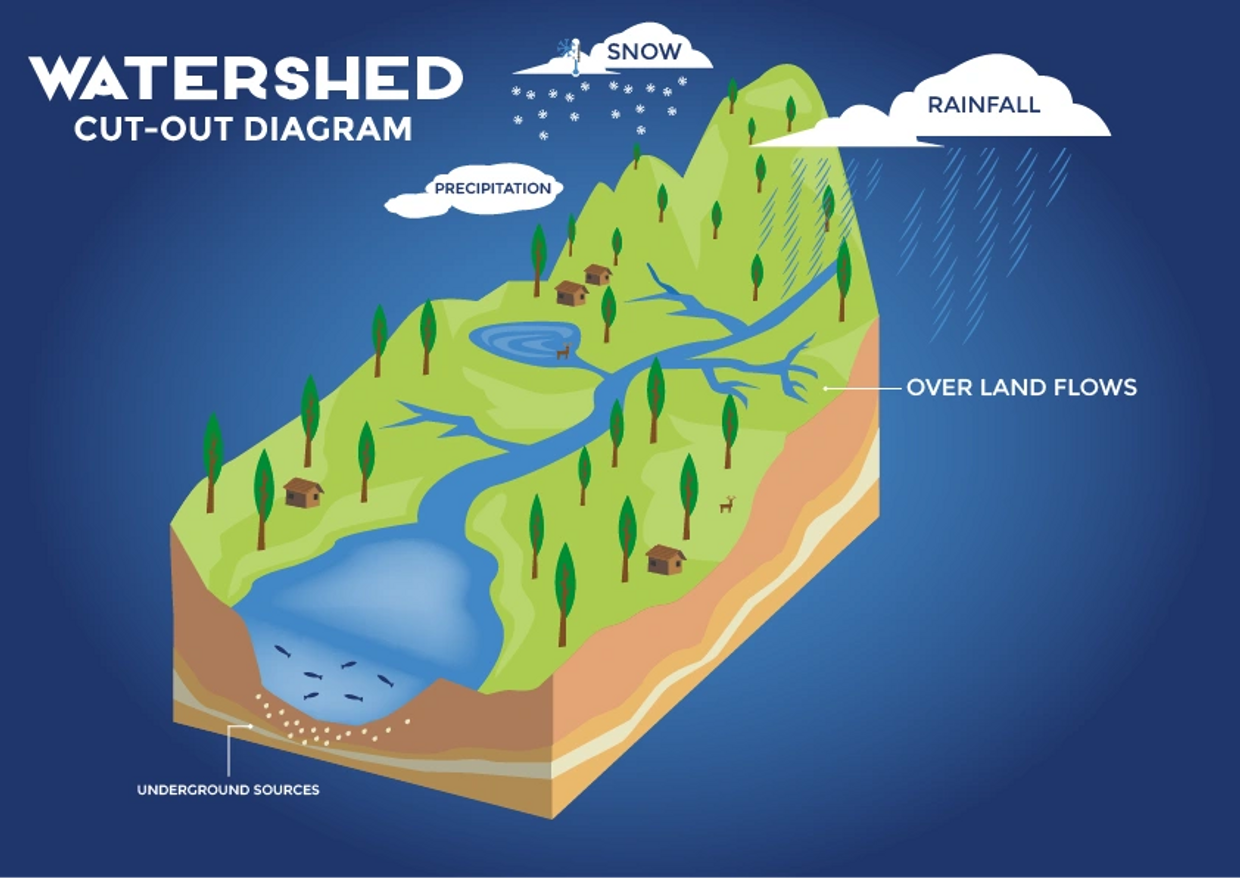
Not all water from rain or snow that falls on a watershed flows out in this way. Some seep into the ground. It goes into underground reservoirs called aquifers. Other water precipitation ends up on hard surfaces such as roads and parking lots, from which it may enter storm drains that feed into streams.
Hence, the preservation of a healthy watershed directly links to ensuring that our water quality remains high. Watersheds help to filter pollutants out of the water before they reach our taps, providing us with green types of clean, drinkable water important for public health.
The protection of watersheds, therefore, is a necessary part of environmental conservation. Promoting and maintaining healthy watersheds play a vital role in public health and the planet’s well-being. Indeed, understanding the role/importance of watershed resources and promoting the health and protection of these unique habitats should become embedded in our daily awareness. The first step is to understand why watersheds are important and play our part in the betterment of our planet, our water, and indeed, our future.
Protecting Healthy Watersheds
When we talk about a healthy watershed, we’re essentially discussing an environmental area that plays a pivotal role in shaping the planet’s health and resources.
Ultimately, a healthy watershed provides clean drinking water and a green water quality habitat for a host of creatures. It’s an environmental hero, quietly ensuring the survival of countless species. At the same time, healthy watersheds also protect against natural disasters such as flooding and drought, which helps protect the land and the ecosystems that live off it.
Watersheds: The CRD’s Approach to Protect Watersheds
The CRD is a local government body responsible for regional issues, such as regional planning, water supply, parks and recreation, and solid waste management. It is composed of 13 municipalities and three electoral areas. The CRD plays a crucial role in coordinating services and addressing shared concerns among the municipalities within its jurisdiction.
The Capital Region District, or CRD, has taken several notable steps to protect watersheds and ensure their health. The CRD understands the vital role watersheds play in maintaining a balanced watershed ecosystem, carrying a diversity of plant and animal life, and supporting human communities. To preserve the safety and purity of water resources, the CRD has adopted comprehensive watershed management strategies to safeguard these crucial natural resources.
Under the CRD’s approach, regular monitoring of watershed health is carried out. This helps to effectively manage and protect watersheds and ensure that they continue to play their essential roles in providing water services. It’s a holistic approach that not only considers the water within the watersheds but extends to the rivers, streams, and the broader environment.
Why Watershed Management is Critical for a Healthy Environment
Effective management strategies contribute to flood prevention, watershed health protecting communities, and minimizing soil erosion. The sustainable use of water resources promoted by watershed management supports agriculture, industries, drinking water, and overall human activities without compromising environmental integrity.
In essence, it is a holistic approach to a healthy watershed that not only ensures the well-being of local ecosystems but also has far-reaching implications for global environmental health and sustainability to protect watersheds. Watershed management may include goals and processes such as reducing the amount of pesticides and fertilizers that wash off farm fields and into nearby waterbodies. Watershed management is closely linked to conservation
Now, the conservation of resources is key to effective watershed management. Our watersheds are home to an abundance of environmental natural resources. Their health directly impacts the quality and quantity of these resources, which include clean water, important minerals, land, and diverse wildlife.
Recent Posts
- Search Menu
Sign in through your institution
- Browse content in Arts and Humanities
- Browse content in Archaeology
- Anglo-Saxon and Medieval Archaeology
- Archaeological Methodology and Techniques
- Archaeology by Region
- Archaeology of Religion
- Archaeology of Trade and Exchange
- Biblical Archaeology
- Contemporary and Public Archaeology
- Environmental Archaeology
- Historical Archaeology
- History and Theory of Archaeology
- Industrial Archaeology
- Landscape Archaeology
- Mortuary Archaeology
- Prehistoric Archaeology
- Underwater Archaeology
- Zooarchaeology
- Browse content in Architecture
- Architectural Structure and Design
- History of Architecture
- Residential and Domestic Buildings
- Theory of Architecture
- Browse content in Art
- Art Subjects and Themes
- History of Art
- Industrial and Commercial Art
- Theory of Art
- Biographical Studies
- Byzantine Studies
- Browse content in Classical Studies
- Classical History
- Classical Philosophy
- Classical Mythology
- Classical Numismatics
- Classical Literature
- Classical Reception
- Classical Art and Architecture
- Classical Oratory and Rhetoric
- Greek and Roman Epigraphy
- Greek and Roman Law
- Greek and Roman Archaeology
- Greek and Roman Papyrology
- Late Antiquity
- Religion in the Ancient World
- Social History
- Digital Humanities
- Browse content in History
- Colonialism and Imperialism
- Diplomatic History
- Environmental History
- Genealogy, Heraldry, Names, and Honours
- Genocide and Ethnic Cleansing
- Historical Geography
- History by Period
- History of Agriculture
- History of Education
- History of Emotions
- History of Gender and Sexuality
- Industrial History
- Intellectual History
- International History
- Labour History
- Legal and Constitutional History
- Local and Family History
- Maritime History
- Military History
- National Liberation and Post-Colonialism
- Oral History
- Political History
- Public History
- Regional and National History
- Revolutions and Rebellions
- Slavery and Abolition of Slavery
- Social and Cultural History
- Theory, Methods, and Historiography
- Urban History
- World History
- Browse content in Language Teaching and Learning
- Language Learning (Specific Skills)
- Language Teaching Theory and Methods
- Browse content in Linguistics
- Applied Linguistics
- Cognitive Linguistics
- Computational Linguistics
- Forensic Linguistics
- Grammar, Syntax and Morphology
- Historical and Diachronic Linguistics
- History of English
- Language Acquisition
- Language Variation
- Language Families
- Language Evolution
- Language Reference
- Lexicography
- Linguistic Theories
- Linguistic Typology
- Linguistic Anthropology
- Phonetics and Phonology
- Psycholinguistics
- Sociolinguistics
- Translation and Interpretation
- Writing Systems
- Browse content in Literature
- Bibliography
- Children's Literature Studies
- Literary Studies (Asian)
- Literary Studies (European)
- Literary Studies (Eco-criticism)
- Literary Studies (Modernism)
- Literary Studies (Romanticism)
- Literary Studies (American)
- Literary Studies - World
- Literary Studies (1500 to 1800)
- Literary Studies (19th Century)
- Literary Studies (20th Century onwards)
- Literary Studies (African American Literature)
- Literary Studies (British and Irish)
- Literary Studies (Early and Medieval)
- Literary Studies (Fiction, Novelists, and Prose Writers)
- Literary Studies (Gender Studies)
- Literary Studies (Graphic Novels)
- Literary Studies (History of the Book)
- Literary Studies (Plays and Playwrights)
- Literary Studies (Poetry and Poets)
- Literary Studies (Postcolonial Literature)
- Literary Studies (Queer Studies)
- Literary Studies (Science Fiction)
- Literary Studies (Travel Literature)
- Literary Studies (War Literature)
- Literary Studies (Women's Writing)
- Literary Theory and Cultural Studies
- Mythology and Folklore
- Shakespeare Studies and Criticism
- Browse content in Media Studies
- Browse content in Music
- Applied Music
- Dance and Music
- Ethics in Music
- Ethnomusicology
- Gender and Sexuality in Music
- Medicine and Music
- Music Cultures
- Music and Religion
- Music and Culture
- Music and Media
- Music Education and Pedagogy
- Music Theory and Analysis
- Musical Scores, Lyrics, and Libretti
- Musical Structures, Styles, and Techniques
- Musicology and Music History
- Performance Practice and Studies
- Race and Ethnicity in Music
- Sound Studies
- Browse content in Performing Arts
- Browse content in Philosophy
- Aesthetics and Philosophy of Art
- Epistemology
- Feminist Philosophy
- History of Western Philosophy
- Metaphysics
- Moral Philosophy
- Non-Western Philosophy
- Philosophy of Science
- Philosophy of Action
- Philosophy of Law
- Philosophy of Religion
- Philosophy of Language
- Philosophy of Mind
- Philosophy of Perception
- Philosophy of Mathematics and Logic
- Practical Ethics
- Social and Political Philosophy
- Browse content in Religion
- Biblical Studies
- Christianity
- East Asian Religions
- History of Religion
- Judaism and Jewish Studies
- Qumran Studies
- Religion and Education
- Religion and Health
- Religion and Politics
- Religion and Science
- Religion and Law
- Religion and Art, Literature, and Music
- Religious Studies
- Browse content in Society and Culture
- Cookery, Food, and Drink
- Cultural Studies
- Customs and Traditions
- Ethical Issues and Debates
- Hobbies, Games, Arts and Crafts
- Natural world, Country Life, and Pets
- Popular Beliefs and Controversial Knowledge
- Sports and Outdoor Recreation
- Technology and Society
- Travel and Holiday
- Visual Culture
- Browse content in Law
- Arbitration
- Browse content in Company and Commercial Law
- Commercial Law
- Company Law
- Browse content in Comparative Law
- Systems of Law
- Competition Law
- Browse content in Constitutional and Administrative Law
- Government Powers
- Judicial Review
- Local Government Law
- Military and Defence Law
- Parliamentary and Legislative Practice
- Construction Law
- Contract Law
- Browse content in Criminal Law
- Criminal Procedure
- Criminal Evidence Law
- Sentencing and Punishment
- Employment and Labour Law
- Environment and Energy Law
- Browse content in Financial Law
- Banking Law
- Insolvency Law
- History of Law
- Human Rights and Immigration
- Intellectual Property Law
- Browse content in International Law
- Private International Law and Conflict of Laws
- Public International Law
- IT and Communications Law
- Jurisprudence and Philosophy of Law
- Law and Politics
- Law and Society
- Browse content in Legal System and Practice
- Courts and Procedure
- Legal Skills and Practice
- Legal System - Costs and Funding
- Primary Sources of Law
- Regulation of Legal Profession
- Medical and Healthcare Law
- Browse content in Policing
- Criminal Investigation and Detection
- Police and Security Services
- Police Procedure and Law
- Police Regional Planning
- Browse content in Property Law
- Personal Property Law
- Restitution
- Study and Revision
- Terrorism and National Security Law
- Browse content in Trusts Law
- Wills and Probate or Succession
- Browse content in Medicine and Health
- Browse content in Allied Health Professions
- Arts Therapies
- Clinical Science
- Dietetics and Nutrition
- Occupational Therapy
- Operating Department Practice
- Physiotherapy
- Radiography
- Speech and Language Therapy
- Browse content in Anaesthetics
- General Anaesthesia
- Browse content in Clinical Medicine
- Acute Medicine
- Cardiovascular Medicine
- Clinical Genetics
- Clinical Pharmacology and Therapeutics
- Dermatology
- Endocrinology and Diabetes
- Gastroenterology
- Genito-urinary Medicine
- Geriatric Medicine
- Infectious Diseases
- Medical Oncology
- Medical Toxicology
- Pain Medicine
- Palliative Medicine
- Rehabilitation Medicine
- Respiratory Medicine and Pulmonology
- Rheumatology
- Sleep Medicine
- Sports and Exercise Medicine
- Clinical Neuroscience
- Community Medical Services
- Critical Care
- Emergency Medicine
- Forensic Medicine
- Haematology
- History of Medicine
- Browse content in Medical Dentistry
- Oral and Maxillofacial Surgery
- Paediatric Dentistry
- Restorative Dentistry and Orthodontics
- Surgical Dentistry
- Medical Ethics
- Browse content in Medical Skills
- Clinical Skills
- Communication Skills
- Nursing Skills
- Surgical Skills
- Medical Statistics and Methodology
- Browse content in Neurology
- Clinical Neurophysiology
- Neuropathology
- Nursing Studies
- Browse content in Obstetrics and Gynaecology
- Gynaecology
- Occupational Medicine
- Ophthalmology
- Otolaryngology (ENT)
- Browse content in Paediatrics
- Neonatology
- Browse content in Pathology
- Chemical Pathology
- Clinical Cytogenetics and Molecular Genetics
- Histopathology
- Medical Microbiology and Virology
- Patient Education and Information
- Browse content in Pharmacology
- Psychopharmacology
- Browse content in Popular Health
- Caring for Others
- Complementary and Alternative Medicine
- Self-help and Personal Development
- Browse content in Preclinical Medicine
- Cell Biology
- Molecular Biology and Genetics
- Reproduction, Growth and Development
- Primary Care
- Professional Development in Medicine
- Browse content in Psychiatry
- Addiction Medicine
- Child and Adolescent Psychiatry
- Forensic Psychiatry
- Learning Disabilities
- Old Age Psychiatry
- Psychotherapy
- Browse content in Public Health and Epidemiology
- Epidemiology
- Public Health
- Browse content in Radiology
- Clinical Radiology
- Interventional Radiology
- Nuclear Medicine
- Radiation Oncology
- Reproductive Medicine
- Browse content in Surgery
- Cardiothoracic Surgery
- Gastro-intestinal and Colorectal Surgery
- General Surgery
- Neurosurgery
- Paediatric Surgery
- Peri-operative Care
- Plastic and Reconstructive Surgery
- Surgical Oncology
- Transplant Surgery
- Trauma and Orthopaedic Surgery
- Vascular Surgery
- Browse content in Science and Mathematics
- Browse content in Biological Sciences
- Aquatic Biology
- Biochemistry
- Bioinformatics and Computational Biology
- Developmental Biology
- Ecology and Conservation
- Evolutionary Biology
- Genetics and Genomics
- Microbiology
- Molecular and Cell Biology
- Natural History
- Plant Sciences and Forestry
- Research Methods in Life Sciences
- Structural Biology
- Systems Biology
- Zoology and Animal Sciences
- Browse content in Chemistry
- Analytical Chemistry
- Computational Chemistry
- Crystallography
- Environmental Chemistry
- Industrial Chemistry
- Inorganic Chemistry
- Materials Chemistry
- Medicinal Chemistry
- Mineralogy and Gems
- Organic Chemistry
- Physical Chemistry
- Polymer Chemistry
- Study and Communication Skills in Chemistry
- Theoretical Chemistry
- Browse content in Computer Science
- Artificial Intelligence
- Computer Architecture and Logic Design
- Game Studies
- Human-Computer Interaction
- Mathematical Theory of Computation
- Programming Languages
- Software Engineering
- Systems Analysis and Design
- Virtual Reality
- Browse content in Computing
- Business Applications
- Computer Security
- Computer Games
- Computer Networking and Communications
- Digital Lifestyle
- Graphical and Digital Media Applications
- Operating Systems
- Browse content in Earth Sciences and Geography
- Atmospheric Sciences
- Environmental Geography
- Geology and the Lithosphere
- Maps and Map-making
- Meteorology and Climatology
- Oceanography and Hydrology
- Palaeontology
- Physical Geography and Topography
- Regional Geography
- Soil Science
- Urban Geography
- Browse content in Engineering and Technology
- Agriculture and Farming
- Biological Engineering
- Civil Engineering, Surveying, and Building
- Electronics and Communications Engineering
- Energy Technology
- Engineering (General)
- Environmental Science, Engineering, and Technology
- History of Engineering and Technology
- Mechanical Engineering and Materials
- Technology of Industrial Chemistry
- Transport Technology and Trades
- Browse content in Environmental Science
- Applied Ecology (Environmental Science)
- Conservation of the Environment (Environmental Science)
- Environmental Sustainability
- Environmentalist Thought and Ideology (Environmental Science)
- Management of Land and Natural Resources (Environmental Science)
- Natural Disasters (Environmental Science)
- Nuclear Issues (Environmental Science)
- Pollution and Threats to the Environment (Environmental Science)
- Social Impact of Environmental Issues (Environmental Science)
- History of Science and Technology
- Browse content in Materials Science
- Ceramics and Glasses
- Composite Materials
- Metals, Alloying, and Corrosion
- Nanotechnology
- Browse content in Mathematics
- Applied Mathematics
- Biomathematics and Statistics
- History of Mathematics
- Mathematical Education
- Mathematical Finance
- Mathematical Analysis
- Numerical and Computational Mathematics
- Probability and Statistics
- Pure Mathematics
- Browse content in Neuroscience
- Cognition and Behavioural Neuroscience
- Development of the Nervous System
- Disorders of the Nervous System
- History of Neuroscience
- Invertebrate Neurobiology
- Molecular and Cellular Systems
- Neuroendocrinology and Autonomic Nervous System
- Neuroscientific Techniques
- Sensory and Motor Systems
- Browse content in Physics
- Astronomy and Astrophysics
- Atomic, Molecular, and Optical Physics
- Biological and Medical Physics
- Classical Mechanics
- Computational Physics
- Condensed Matter Physics
- Electromagnetism, Optics, and Acoustics
- History of Physics
- Mathematical and Statistical Physics
- Measurement Science
- Nuclear Physics
- Particles and Fields
- Plasma Physics
- Quantum Physics
- Relativity and Gravitation
- Semiconductor and Mesoscopic Physics
- Browse content in Psychology
- Affective Sciences
- Clinical Psychology
- Cognitive Neuroscience
- Cognitive Psychology
- Criminal and Forensic Psychology
- Developmental Psychology
- Educational Psychology
- Evolutionary Psychology
- Health Psychology
- History and Systems in Psychology
- Music Psychology
- Neuropsychology
- Organizational Psychology
- Psychological Assessment and Testing
- Psychology of Human-Technology Interaction
- Psychology Professional Development and Training
- Research Methods in Psychology
- Social Psychology
- Browse content in Social Sciences
- Browse content in Anthropology
- Anthropology of Religion
- Human Evolution
- Medical Anthropology
- Physical Anthropology
- Regional Anthropology
- Social and Cultural Anthropology
- Theory and Practice of Anthropology
- Browse content in Business and Management
- Business Strategy
- Business History
- Business Ethics
- Business and Government
- Business and Technology
- Business and the Environment
- Comparative Management
- Corporate Governance
- Corporate Social Responsibility
- Entrepreneurship
- Health Management
- Human Resource Management
- Industrial and Employment Relations
- Industry Studies
- Information and Communication Technologies
- International Business
- Knowledge Management
- Management and Management Techniques
- Operations Management
- Organizational Theory and Behaviour
- Pensions and Pension Management
- Public and Nonprofit Management
- Social Issues in Business and Management
- Strategic Management
- Supply Chain Management
- Browse content in Criminology and Criminal Justice
- Criminal Justice
- Criminology
- Forms of Crime
- International and Comparative Criminology
- Youth Violence and Juvenile Justice
- Development Studies
- Browse content in Economics
- Agricultural, Environmental, and Natural Resource Economics
- Asian Economics
- Behavioural Finance
- Behavioural Economics and Neuroeconomics
- Econometrics and Mathematical Economics
- Economic Systems
- Economic Methodology
- Economic History
- Economic Development and Growth
- Financial Markets
- Financial Institutions and Services
- General Economics and Teaching
- Health, Education, and Welfare
- History of Economic Thought
- International Economics
- Labour and Demographic Economics
- Law and Economics
- Macroeconomics and Monetary Economics
- Microeconomics
- Public Economics
- Urban, Rural, and Regional Economics
- Welfare Economics
- Browse content in Education
- Adult Education and Continuous Learning
- Care and Counselling of Students
- Early Childhood and Elementary Education
- Educational Equipment and Technology
- Educational Strategies and Policy
- Higher and Further Education
- Organization and Management of Education
- Philosophy and Theory of Education
- Schools Studies
- Secondary Education
- Teaching of a Specific Subject
- Teaching of Specific Groups and Special Educational Needs
- Teaching Skills and Techniques
- Browse content in Environment
- Applied Ecology (Social Science)
- Climate Change
- Conservation of the Environment (Social Science)
- Environmentalist Thought and Ideology (Social Science)
- Management of Land and Natural Resources (Social Science)
- Natural Disasters (Environment)
- Pollution and Threats to the Environment (Social Science)
- Social Impact of Environmental Issues (Social Science)
- Sustainability
- Browse content in Human Geography
- Cultural Geography
- Economic Geography
- Political Geography
- Browse content in Interdisciplinary Studies
- Communication Studies
- Museums, Libraries, and Information Sciences
- Browse content in Politics
- African Politics
- Asian Politics
- Chinese Politics
- Comparative Politics
- Conflict Politics
- Elections and Electoral Studies
- Environmental Politics
- Ethnic Politics
- European Union
- Foreign Policy
- Gender and Politics
- Human Rights and Politics
- Indian Politics
- International Relations
- International Organization (Politics)
- Irish Politics
- Latin American Politics
- Middle Eastern Politics
- Political Methodology
- Political Communication
- Political Philosophy
- Political Sociology
- Political Theory
- Political Behaviour
- Political Economy
- Political Institutions
- Politics and Law
- Politics of Development
- Public Administration
- Public Policy
- Qualitative Political Methodology
- Quantitative Political Methodology
- Regional Political Studies
- Russian Politics
- Security Studies
- State and Local Government
- UK Politics
- US Politics
- Browse content in Regional and Area Studies
- African Studies
- Asian Studies
- East Asian Studies
- Japanese Studies
- Latin American Studies
- Middle Eastern Studies
- Native American Studies
- Scottish Studies
- Browse content in Research and Information
- Research Methods
- Browse content in Social Work
- Addictions and Substance Misuse
- Adoption and Fostering
- Care of the Elderly
- Child and Adolescent Social Work
- Couple and Family Social Work
- Direct Practice and Clinical Social Work
- Emergency Services
- Human Behaviour and the Social Environment
- International and Global Issues in Social Work
- Mental and Behavioural Health
- Social Justice and Human Rights
- Social Policy and Advocacy
- Social Work and Crime and Justice
- Social Work Macro Practice
- Social Work Practice Settings
- Social Work Research and Evidence-based Practice
- Welfare and Benefit Systems
- Browse content in Sociology
- Childhood Studies
- Community Development
- Comparative and Historical Sociology
- Disability Studies
- Economic Sociology
- Gender and Sexuality
- Gerontology and Ageing
- Health, Illness, and Medicine
- Marriage and the Family
- Migration Studies
- Occupations, Professions, and Work
- Organizations
- Population and Demography
- Race and Ethnicity
- Social Theory
- Social Movements and Social Change
- Social Research and Statistics
- Social Stratification, Inequality, and Mobility
- Sociology of Religion
- Sociology of Education
- Sport and Leisure
- Urban and Rural Studies
- Browse content in Warfare and Defence
- Defence Strategy, Planning, and Research
- Land Forces and Warfare
- Military Administration
- Military Life and Institutions
- Naval Forces and Warfare
- Other Warfare and Defence Issues
- Peace Studies and Conflict Resolution
- Weapons and Equipment

- < Previous chapter
- Next chapter >

14 Analysis and Management of Watersheds
- Published: November 2000
- Cite Icon Cite
- Permissions Icon Permissions
The concept of ‘watershed management’ combines two things, namely managing the physical aspects of water resources and managing the socio-economic systems. The problem of watershed management has mixed impacts, mixed institutional jurisdictions, and mixed signals as to what are benefits and costs. An integrated and multi-disciplinary approach is needed. Understanding the sociology of watersheds is crucial because in many cases, groups and communities inhabiting the upper watersheds tend to be both physically and politically remote, and tend to be outside the national mainstream. Increased public participation is essential, but more needs to be done to focus on the role of mountain communities. Economic analysis of watersheds focuses on the measurement and monetary valuation of various activities of interest within the watershed. The chapter uses case studies and examples to illustrate these issues and discusses some policy implications.
Personal account
- Sign in with email/username & password
- Get email alerts
- Save searches
- Purchase content
- Activate your purchase/trial code
- Add your ORCID iD
Institutional access
Sign in with a library card.
- Sign in with username/password
- Recommend to your librarian
- Institutional account management
- Get help with access
Access to content on Oxford Academic is often provided through institutional subscriptions and purchases. If you are a member of an institution with an active account, you may be able to access content in one of the following ways:
IP based access
Typically, access is provided across an institutional network to a range of IP addresses. This authentication occurs automatically, and it is not possible to sign out of an IP authenticated account.
Choose this option to get remote access when outside your institution. Shibboleth/Open Athens technology is used to provide single sign-on between your institution’s website and Oxford Academic.
- Click Sign in through your institution.
- Select your institution from the list provided, which will take you to your institution's website to sign in.
- When on the institution site, please use the credentials provided by your institution. Do not use an Oxford Academic personal account.
- Following successful sign in, you will be returned to Oxford Academic.
If your institution is not listed or you cannot sign in to your institution’s website, please contact your librarian or administrator.
Enter your library card number to sign in. If you cannot sign in, please contact your librarian.
Society Members
Society member access to a journal is achieved in one of the following ways:
Sign in through society site
Many societies offer single sign-on between the society website and Oxford Academic. If you see ‘Sign in through society site’ in the sign in pane within a journal:
- Click Sign in through society site.
- When on the society site, please use the credentials provided by that society. Do not use an Oxford Academic personal account.
If you do not have a society account or have forgotten your username or password, please contact your society.
Sign in using a personal account
Some societies use Oxford Academic personal accounts to provide access to their members. See below.
A personal account can be used to get email alerts, save searches, purchase content, and activate subscriptions.
Some societies use Oxford Academic personal accounts to provide access to their members.
Viewing your signed in accounts
Click the account icon in the top right to:
- View your signed in personal account and access account management features.
- View the institutional accounts that are providing access.
Signed in but can't access content
Oxford Academic is home to a wide variety of products. The institutional subscription may not cover the content that you are trying to access. If you believe you should have access to that content, please contact your librarian.
For librarians and administrators, your personal account also provides access to institutional account management. Here you will find options to view and activate subscriptions, manage institutional settings and access options, access usage statistics, and more.
Our books are available by subscription or purchase to libraries and institutions.
| Month: | Total Views: |
|---|---|
| October 2022 | 1 |
| November 2022 | 2 |
| February 2023 | 1 |
| March 2023 | 3 |
| June 2023 | 1 |
| January 2024 | 3 |
| February 2024 | 3 |
| March 2024 | 1 |
| April 2024 | 2 |
- About Oxford Academic
- Publish journals with us
- University press partners
- What we publish
- New features
- Open access
- Rights and permissions
- Accessibility
- Advertising
- Media enquiries
- Oxford University Press
- Oxford Languages
- University of Oxford
Oxford University Press is a department of the University of Oxford. It furthers the University's objective of excellence in research, scholarship, and education by publishing worldwide
- Copyright © 2024 Oxford University Press
- Cookie settings
- Cookie policy
- Privacy policy
- Legal notice
This Feature Is Available To Subscribers Only
Sign In or Create an Account
This PDF is available to Subscribers Only
For full access to this pdf, sign in to an existing account, or purchase an annual subscription.
Sustainable Watershed Management Plan Essay
- To find inspiration for your paper and overcome writer’s block
- As a source of information (ensure proper referencing)
- As a template for you assignment
The sustainable resource management program has evolved, planning the process of water usage as it becomes difficult to receive sufficient water supply to maintain the land in the future. Many countries depend heavily on natural resources for survival. Those countries are associated with the rapid growth of population, inefficient agricultural production, low off-farm sector production, and low developmental changes.
They utilize the natural resources, such as public lands and forest lands, which are exploited by people to meet their basic needs, at most (Zin 83). This has been one of the major causes of drastic changes in the environment and nature in general because instead of being utilized for the purpose of achieving human welfare, it is rather used to bring about natural calamities which occur in form of landslides, soil erosion, floods, and droughts, among others. These have posed a serious threat to the fragile natural environment.
The first step to consider in planning sustainable watershed management is the prioritization of watersheds. The increasing patterns of hill-landslides and silt deposits in the major river systems are signs of serious watershed natural resources and environmental degradation problems. This can be contained through the prioritization of the watershed with respect to Soil Erosion status (SES). To achieve sustainable development of natural resources, watershed planning is crucial.
Prioritization enables the use of limited manpower, cost, and time optimally for watershed planning. It is impossible to implement Soil Conservation and Watershed Management (SCWM) programs in all areas at the same time given the financial and technological constraints (Erickson, Messner, and Ring 144). Moreover, it may be impossible to treat all areas immediately, although sometimes, such precautions are unnecessary in order to avoid further degradation of the watershed.
The second important thing in a sustainable watershed plan is community participation. Prioritization of sub-watersheds focusing on the participation of local people is an excellent approach in watershed management planning. It is definite that the living standard of people in a country can only be achieved in a sustainable way if watershed management planning emphasizing on conservation of natural resources is undertaken along with local people’s participation.
Participatory watershed management planning enables locals to identify programs based on their needs, capacities, and the possible level use of the resource present. They simultaneously make use of their knowledge and experience to come up with goals and objectives for the improvement of their villages or places. Without the support and participation of local people, Government initiatives in the soil conservation and watershed management work programs could not succeed.
The local population’s participation is obtained in the decision-making and planning of the project. They should be part of the decision-making and planning to express their views on what they think about the plan. The participation of the community can also be found in the implementation and maintenance of the project. They should make the plan effective by adopting and strictly following its guideline. In order to promote the idea of people’s participation, close cooperation with local people is required for the implementation of watershed planning.
Finally, the planning process should be implemented. The planning process can be carried out through two specific steps. The first stage is to develop regulatory guidance in form of a water Resource Ordinance touching every area in the country. This can be designed in a way to be included in each township and intersected with their particular ordinances, zoning, and plans. The second step calls for adopting the use and accessibility of computer and in-house capabilities for data used to enable each area to maximize the utilization of the data developed anywhere within the country.
This will be in form of a Watershed Data System; however, the problem is that some of the areas have already got access to the computer system, while others have not had yet. In integrating the country plan, we have to ensure that the river conservation planning process is compatible in form and in substance, to prevent it from being in conflict with country guidance as much sustainable environment management is concerned. The plan should contain the following guidelines for the purpose of offering the best solution for a sustainable watershed management plan (Heathcote 8). These guidelines should include the following.
First, depletive water utilization should be limited to about 50%. This will help reduce water depletion levels to manageable levels. Second, proposals should be made concerning the development of land with consideration of the effects of water resources on the proposal. This proposal should be made by the stakeholders of the land. Third, permission should be given to individuals and the community in regard to wastewater systems and include the limitation of net effects of groundwater quality, and nitrate concentration to 10mg/l. Forth, the utilization of groundwater should be accompanied by groundwater for both the individual and community systems. Fifth, the criteria used to manage stormwater should demand recharge of all increased runoff, and the criteria for detention should be used only as of the solution of the last resort. And finally, link with public sewer system which transfers wastewaters should be compensated by import of water from sources external to the sub-basin.
In conclusion, to achieve an effective sustainable watershed management plan, the above key issues should be considered. Prioritization of the watershed and community participation is the most significant issue to consider before the plan is implemented. In implementation process, all the guidelines provided should be put to effect across the country for the sustainable watershed plan to be efficient. Moreover, all the stakeholders of the watershed including the community should participate to improve and make the plan work.
How has your idea of sustainability changed over the course?
My idea of watershed management plan has changed in a number of ways. Let’s begin by the watershed protection. Watershed protection involves protection of lake, river or other water bodies by managing the whole watershed that flows into it. Education has been provided all over to the communities and properties of the watershed in regard to how to improve the protection of watershed. Effective land use and improvement of water quality help communities make decisions about how to protect their streams.
Globally, there have been demands on water services for the purpose of meeting the ecological needs. This has made the society pursue for better sustainable solutions that may make it easy for all people to get access to clean water. Emphasis has been placed on the importance of ecological services as section of the management plan in new approaches. An ecological service brings out clearly the importance of nature in ensuring the availability of safe and clean drinking water.
The recognition of the true value of water is of great importance to the objective of achieving sustainability of water supply systems and ensuring its reliability. Finding out how people use water may help improve the utilization of water and minimize costs affected by giving the challenges to the water valuation. Challenging the methods used to value water and chances to benefit from water systems and societal attitudes is the major approach.
Diarrheal diseases affect many people across the globe and are the barrier to achieve health objectives, as provided by various organizations. We cannot rely on technology alone as it cannot guarantee access to clean water as such social causes as health, culture and behavior can work best in designing implementation strategies.
Some people suggest that interventions and water services programs need to include these social factors and take into account the communities developing the design, implementation and assessment of these programs.
There are approaches designed to conduct integrated water resources planning evaluations. These plans help link various water resources to ensure easy management of the water resources. There have also been strategies for water balance in terms of information about the demand and supply of water. User-friendly interfaces, such as Graphical drag-and-drop GIS-based, which has flexible model outputs as maps, charts and tables, have enabled the sustainable management strategies to be easily effected.
In many places all over the world, water services policies are divided. Various different agencies monitor the aspects of water services ranging from those that protect the watersheds to those that control water from the taps. This circumstance may also be different if an individual lives in a community with limited access to technology or in urban place with a community water system. There has been an attempt to achieve sustainable water services which includes social, economical and technological aspects. Sustainable watershed management plan involves preservation of the great lakes through personal responsibility.
The stakeholders of the watershed should cooperate in planning the sustainable watershed management. They should decide on effective guidelines to be followed, as much as the watershed is concerned. These stakeholders include the local people, nearby factories, the government agencies and every other party involved that benefit from the watershed. The participation of the stakeholders is important because they can give their ideas on how the watershed can be improved to meet their needs effectively.
The stakeholders should also ensure the protection of the watershed from pollution and destruction. For example, the community leaders should warn the local people on disposing wastes into a river, while the government can impose standards on emissions and fines to the factory found disposing waste into the river. If this is attained, then the ecological needs for water and the sustainable management can be achieved.
Works Cited
Erickson, Jon David, Frank, Messner and Irene, Ring . Ecological Economics of Sustainable Watershed Management. Bingley, UK: Emerald Group Publishing, 2007. Print.
Heathcote, Isobel W. Integrated Watershed Management: Principles and Practice. New York: John Wiley & Sons , 2009. Print.
Zin, Min Thant. Developing a Scientific Basis for Sustainable Management of Tropical Forest Watersheds. Fribourg: Universitätsverlag Göttingen, 2005. Print.
- Sustainable Practices and Environmental Responsibility
- Weeds of National Significance' Management
- Water Pollution in the US: Causes and Control
- The Water Treatment System Project
- Environmental and Animal Ethics
- Biomass Energy, Its Advantages and Disadvantages
- The Implementation Deficit in the Niger Delta
- The Sustainability of Lifestyle
- The National Ganga River Basin Project
- Environmental Damage vs. Better Living Standards
- Chicago (A-D)
- Chicago (N-B)
IvyPanda. (2021, February 9). Sustainable Watershed Management Plan. https://ivypanda.com/essays/sustainable-watershed-management-plan/
"Sustainable Watershed Management Plan." IvyPanda , 9 Feb. 2021, ivypanda.com/essays/sustainable-watershed-management-plan/.
IvyPanda . (2021) 'Sustainable Watershed Management Plan'. 9 February.
IvyPanda . 2021. "Sustainable Watershed Management Plan." February 9, 2021. https://ivypanda.com/essays/sustainable-watershed-management-plan/.
1. IvyPanda . "Sustainable Watershed Management Plan." February 9, 2021. https://ivypanda.com/essays/sustainable-watershed-management-plan/.
Bibliography
IvyPanda . "Sustainable Watershed Management Plan." February 9, 2021. https://ivypanda.com/essays/sustainable-watershed-management-plan/.
The Importance of Watershed Management in Sustainable Development
- Conference paper
- First Online: 05 February 2023
- pp 3210–3218
- Cite this conference paper

- Elnur Allahverdiyev ORCID: orcid.org/0000-0002-1477-9217 12
Part of the book series: Lecture Notes in Networks and Systems ((LNNS,volume 574))
Included in the following conference series:
- International Scientific Conference on Agricultural Machinery Industry “Interagromash"”
28 Accesses
Water is vital for living things. Since ancient times, water has played a central role in the development of societies. However, the ecological status of water resources is under threat due to pressures stemming from human activities and poor management. As the effects of global warming and climate change, which have become one of the most discussed issues in the world public opinion in recent years and are among the most important environmental problems, are observed, the interest of human beings is increasing and threatening humanity. For the sustainable use of water resources, watershed management principles should be evaluated and planned at the watershed scale. In this context, various studies are carried out in the world and in the member countries of the European Union (EU). In our country, it has intensified its studies within the scope of the EU Water Framework Directive in recent years. In the study, qualified methods were used for the management of watershed resources and watershed issue.
This is a preview of subscription content, log in via an institution to check access.
Access this chapter
Subscribe and save.
- Get 10 units per month
- Download Article/Chapter or eBook
- 1 Unit = 1 Article or 1 Chapter
- Cancel anytime
- Available as PDF
- Read on any device
- Instant download
- Own it forever
- Available as EPUB and PDF
- Compact, lightweight edition
- Dispatched in 3 to 5 business days
- Free shipping worldwide - see info
Tax calculation will be finalised at checkout
Purchases are for personal use only
Institutional subscriptions
Similar content being viewed by others
Hydrologic analysis of the challenges facing water resources and sustainable development of wadi feiran basin, southern sinai, egypt.

Introduction to Watershed Management

Brooks, K.N., Pfolliott, P.F., Gregersen, H.M., DeBano, L.F.: Hydrology and the Management of Watersheds, 3rd edn. Blackwell Publishing Company, Iowa State University Press (2003)
Google Scholar
Baloch, M.A., Tanık, A.: Development of an ıntegrated watershed management strategy for resource conservation in Balochistan province of Pakistan. Desalination 226 (1–3), 38–46 (2008). https://doi.org/10.1016/j.desal.2007.02.098
Article Google Scholar
Bach, H., et al.: From local watershed management to integrated river basin management at national and transboundary levels: workshop report. Engineering (2011) https://doi.org/10.52107/mrc.ajhylu
Bahadır, M.: Uzaktan algılama ve coğrafi bilgi sistemleri ile acıgöl havzasının sürdürülebilir kullanımı ve yönetimi. Doktora tezi, Afyon Kocatepe Üniversitesi, Sosyal Bilimler Enstitüsü, Coğrafya Anabilim Dalı, Afyonkarahisar, pp 1–24 (2011)
Beheim, E., Rajwar, G.S., Haigh, M., Krecek, J.: Integrated Watershed Management: Perspectives and Problems, p.273. Springer Science, Business Media (2012)
Chubarenko, B.: Watershed management in the Russian Federation and transboundary issues bu example of Kalinigrad Oblast (Russia). Environmental Science, pp. 133–149. https://doi.org/10.1007/978-1-4020-8558-1_9
Cox, C., Madramootoo, C.: Aplication of geographic information systems in watershed management in St. Lucia. Comput. Electron. Agric. 20 (3), 229–250. https://doi.org/10.1016/S0168-1699%2898%2900021-0
Dawei, H., Jingsheng, C.: Issues, perspectives and need for ıntegrated watershed management in China. Environ. Conserv. 28 (4), 368–377 (2001). https://doi.org/10.1017/S037689290100039X
Dorge, J., Windolf, J.: Implementation Of the water framework directive - can we use models as a tool in ıntegrated river basin management? Int. J. River Basin Manag. 1 , 165–171 (2010). https://doi.org/10.1080/15715124.2003.9635203
Garipağaoğlu, N., Uzun, M.: İznik Gölü Havzası'nda doğal ortam koşulları, değişimler ve muhtemel risklerin havza yönetimi ve planlamasına etkisi. Doğu Coğrafya Dergisi 24 (42), 1–15 (2019). https://doi.org/10.17295/ataunidcd.621776
Gonzalez, A.C, Arias, C.: The incorporation of integrated management in European water policy. In: Proceedings of EI Symposium Field al Davis, pp. 69–74, April 2000, California. IAHS-AISH publication (2001)
Heinz, I., Pulido Velazquez, M., Lund, J.R., Andreu, J.: Hydro-economic modeling in river basin management: implications and applications for the European water framework directive. Water Resour. Manag. 21 , 1103–1125 (2007). https://doi.org/10.1007/S11269-006-9101-8
Download references
Author information
Authors and affiliations.
Baku Business and Cooperation College, Najaf Narimanov Street, 8B, Baku, Republic of Azerbaijan
Elnur Allahverdiyev
You can also search for this author in PubMed Google Scholar
Corresponding author
Correspondence to Elnur Allahverdiyev .
Editor information
Editors and affiliations.
Don State Technical University, Rostov- on-Don, Russia
Alexey Beskopylny
St. Petersburg State Institute of Technology, St. Petersburg, Russia
Mark Shamtsyan
St. Petersburg State Polytechnical Univesity, St Petersburg, Russia
Viktor Artiukh
Rights and permissions
Reprints and permissions
Copyright information
© 2023 The Author(s), under exclusive license to Springer Nature Switzerland AG

About this paper
Cite this paper.
Allahverdiyev, E. (2023). The Importance of Watershed Management in Sustainable Development. In: Beskopylny, A., Shamtsyan, M., Artiukh, V. (eds) XV International Scientific Conference “INTERAGROMASH 2022”. INTERAGROMASH 2022. Lecture Notes in Networks and Systems, vol 574. Springer, Cham. https://doi.org/10.1007/978-3-031-21432-5_355
Download citation
DOI : https://doi.org/10.1007/978-3-031-21432-5_355
Published : 05 February 2023
Publisher Name : Springer, Cham
Print ISBN : 978-3-031-21431-8
Online ISBN : 978-3-031-21432-5
eBook Packages : Engineering Engineering (R0)
Share this paper
Anyone you share the following link with will be able to read this content:
Sorry, a shareable link is not currently available for this article.
Provided by the Springer Nature SharedIt content-sharing initiative
- Publish with us
Policies and ethics
- Find a journal
- Track your research
Agriculture in India
Essay on watershed management | agriculture.
Here is an essay on ‘Watershed Management’ for class 8, 9, 10, 11 and 12. Find paragraphs, long and short essays on ‘Watershed Management’ especially written for school and college students.
Essay on Watershed Management
Essay # 1. meaning of watershed management:.
Watershed means an area of land whose runoff drains to a common point i.e. in the river or water pool. Watershed may be defined as a natural unit of land whose runoff collects & flows out of the area through a single common outlet into a river or other water body. It is a drainage basin which is demarcated by ridges or gullies. Watershed, drainage area or catchment area are generally interchangeably used meaning for the same.
Ordinarily the catchment area (water collecting area) is larger but the area of watershed is comparatively smaller. Watershed area is the unit from the both angles i.e. land unit and water body unit, but there are separate units for both land and water in the catchment area.
Therefore catchment area comprises of all the areas from which water flows out into a common river or water pool. The different river’s tributaries having different water catchment areas flow out into a common larger river. The larger drainage area is called river basin.
The water catchment area of a tributary is called sub- catchment area and the different catchment areas may be identified in it for its certain parts. The catchment area of this certain part is called watershed area. There may be variations in the watershed area.
When these variations are more in number it means the area is hilly, undulating or rolling and we get smaller watershed area whereas in the plain we get larger. The watershed for the agricultural purpose may be several fields of farmers that contribute runoff water to the flow at the lower point. The runoff movement depends on the land topography. Runoff from the upper fields enters into the lower fields in a watershed causes soil and water erosion.
Soil conservation measures in an isolated manner are not sufficient to check the erosion. Therefore, it is necessary that soil conservation measures should be adopted on the watershed basis instead of personal individual field. In the dryland areas, soil and water erosion, flood etc. are the major problems.
Considering these points, the Govt., of India launched a Watershed Management Programme in the seventh five year plan to develop dryland areas on the basis of watershed. For soil and water conservation measures, watershed is demarcated into sub watersheds & micro- watersheds.
Micro-watersheds are the basis for planning and execution. In the beginning, there was a plan to develop 4000 watersheds in different agro-climatic regions. The Department of Agriculture provided the funds for this programme and the responsibility of evaluating 47 watersheds management programmes initiated in different states was given to ICAR. This programme was accelerated in 1983 when World Bank gave the assistance in the development of four watersheds.
Essay # 2. Features of Watershed Management:
Watershed management programme has following features:
(a) Soil & Water Conservation Measures:
Soil and water conservation measures on the watershed basis include all those measures which are effective in preventing or delaying the movement of soil and rock particles. In it the emphasis is given on soil surveying, contour and graded bunding, repairing of old bunds and dams, land reclamation, digging of farm ponds etc.
(b) Scientific Dry Fanning:
The agricultural activities like contour ploughing, pre-monsoon ploughing, deep ploughing, mulching, development of new varieties according to agro-climatic zones, weed control, integrated nutrient management and integrated pest management improve the production in dryland areas.
(c) Forestry and development of pasture; and
(d) Animal Husbandry and Development of Dairy:
Proper animal husbandry, artificial insemination, economic assistance to the milk producing cooperative societies etc. are to be adopted.
Essay # 3. Aims and Objectives of Watershed Management:
1. To protect, conserve & improve the land resources for efficient and sustained production;
2. To protect and enhance water resource, moderate floods & reduce silting up of tanks, increase irrigation and conserve rainwater for crops and thus mitigate droughts.
3. To utilise the natural local resources for improving agriculture and allied occupation or industries so as to improve socio-economic conditions of the local residents.
Thus, watershed management is the planned use of watershed lands in accordance with pre-determined objectives, such as the control of erosion, stream flow, sedimentation, and the improvement of vegetative cover and other related resources. Such watershed management integrate plans for soil conservation, soil improvement, irrigation drainage, flood prevention and development of water supplies for all purposes.
In case of agricultural micro-watersheds, important aspects are soil conservation measures, soil improvement, storage and utilisation of runoff water. In dry farming areas, watershed approach provides an ideal means for integrated development.
There is a need for multipronged approach to maximise crop production & also to ensure stability in rural income for integrated watershed management having following steps:
(i) Water harvesting
(ii) Location specific technology for crop production
(iii) Adoption of intercropping and crop substitution according to soil suitability
(iv) Afforestation on cultivable wastes and marginal lands
(v) Practice of dryland horticulture to minimise risk. Mango, guava, ber, pomegranate, sapota and tamarind have good potential on marginal land.
(vi) More efficient exploitation &use of ground water and irrigation
(vii) Development of dairying and pasture management
(viii) Stall fed goat and sheep farming needs to be popularized
(ix) Popularisation of sericulture and mulberry cultivation
(x) Processing of farm & horticultural produce
(xi) Sound extension and training programmes for the farmers
Water Harvesting/Runoff Concentration/Rainfall Precipitation:
In humid climates, runoff usually occurs only when rain falls on a saturated soil. Under semi-arid conditions, the total annual precipitation may or may not be sufficient, but most of the rain falls in a short period causing humid climate conditions and resulting into runoff. In both conditions, the excess rain water should be safely guided and collected in nearby ponds for recycling in drier period for life saving irrigation.
Water harvesting is defined as the collecting and storing water on the surface of soil for subsequent use. It is a method to induce, collect, store and conserve local surface runoff for agriculture in arid and semiarid regions. Water harvesting was developed to a fine art about 2000 years by the Nabateans. The term ‘water harvesting’ was first time used by Myors.
Normally water harvesting is more effective in areas situated near hill side or in the areas where large portion is bare soil and cultivation is done on small portions. The technology of water harvesting differs according to soil types, topography, annual rainfall and the crops to be grown.
Essay # 4. Techniques of Watershed Management:
In India three types of water harvesting techniques are generally practiced:
(i) Inter-Row Water Harvesting:
It is practiced in arid areas with light soil where annual rainfall does not exceed 400-450 mm. The crop is sown in narrow strips between wide intervals that are ridged as artificial miniature watersheds. Later on these are compacted to increase runoff to the crop rows. It is more practical since no land is sacrificed for harvesting water.
(ii) Inter- Plot or Microplot Water Harvesting:
In this case, water is harvested in the passages or furrows between the plots when rainfall is comparatively more. Runoff from the sloping area supplements rainfall for raising crop on level land.
(iii) Water Harvesting in Farm Ponds & Reservoirs:
Surface runoff from small watersheds is stored in farm ponds & reservoirs for utilization as supplemental or lifesaving irrigation. This harvested water can either be used as lifesaving irrigation to Kharif crops at the time of drought due to irregular monsoon or as supplemental irrigation to winter crops. Since the stored water is limited, steps should be taken to reduce losses from seepage and evaporation. Suitable lining materials for pond beds and anti- evaporants should be found out and used.
Runoff can be increased by either by land alteration or by chemical treatment. Impermeable catchments are prepared by spraying asphalt compounds. Thin plastic films or metal sheets can also be used to cover ground surface for water collection. Waterborne asphalt emulsions are much effective in controlling seepage loss. Bentonite has excellent sealing properties if kept continuously wet.
In the case of Broad Bed & Furrow system, excess water during rainy season is collected through the furrows and passed through grassed waterways into farm pond or reservoirs.
The stored water should be recycled most judiciously so as to get maximum return out of it. Only one or two irrigations are possible with the limited water stored. Therefore supplemental irrigation can be scheduled by two approaches viz. soil moisture depletion approach and critical stage approach. Irrespective of the crop stage, irrigation is scheduled when soil moisture approaches to permanent wilting point to save the crop. This supplemental irrigation is known as life-saving irrigation.
A chemical which when applied (mixed) in soil, improve the aeration, infiltration and water holding capacity of the soil.
Evapo-Transpiration (ET):
Soil moisture is the most limiting factor in dryland agriculture. About 60-75% of the rainfall is lost through evaporation. The evapo-transpiration is the evaporation from the soil surface and transpiration from the plant surface.
Such losses can be reduced by:
(i) Mulches
(ii) Antitranspirants
(iii) Wind breaks and
(iv) Weed control.
Antitranspirants:
Such materials are applied to transpiring plant surfaces to reduce water loss from the plant.
Antitranspirants are of four types:
(a) Stomata Closing Type:
Such antitranspirants reduce water loss through stomatal closing .e.g. phenyl mercuric acetate (PMA), herbicides like Atrazine in low concentrations, ABA and CO 2 .
(b) Film Forming Type:
Retard moisture loss due to formation of thin film as physical barrier e.g. Mobileaf, hexadecanol, silicone, oils, waxes.
(c) Reflecting Type:
Such materials reflect the radiation and thus reduce leaf temp and vapour pressure gradient from leaf to atmosphere and ultimately transpiration is reduced e.g. celite (a diatomaceous earth product) and Kaolin. Application of 5% Kaolin spray reduces transpiration loss.
(d) Growth Retardants:
Such chemicals reduce shoot growth and increase root growth and thus enable the plants to resist drought. It also induces stomatal closure e.g. cycocel (ccc).
Antitranspirants generally reduce photosynthesis. Therefore, their use is limited to save the crop from death under severe moisture stress. They have some practical use in nurseries and horticultural crops.
Windbreaks and Shelter Belts:
Windbreaks are such structures which break the wind – flow and reduce wind speed while shelterbelts are rows of trees or shrubs planted for protection of crop against wind. They provide a protective shelter against wind and suitable habitat for birds and honeybees as well as produce cattle feed and fuel wood. In the wind erosion areas, windbreaks & shelterbelts are to be planted. They prevent soil erosion, arrest the march of desert and protect the agricultural and residential lands from dust- storms.
A rows of trees & shrubs planted across the wind – direction is the most effective. It reduces the wind speed upto 60-80% on leewide side. The height of tall tree and length of windbreak determine the extent of protection provided to soil. Windbreak & shelterbelt provides the protective shelter against desiccating winds to the extent of 5-10 times the height of tall tree on windward side and upto 30 times on leeward side.
For example, a 10-11m tall windbreak when encountered by 45-50 km/hr. wind, it reduces on windward side to 20-30 km/hr and to 10 km per hour on just leeward side which is illustrated by the figure 5a.
The wind-break reduces the wind speed on the leeward side at 200m away upto 20% only and in the area as at 300m away, there is no effect at all. Therefore at an interval of 300m, such windbreaks should be repeated.
To control weed erosion, the capacity of shelterbelt depends upon the speed and direction of wind. In case of high wind speed, the protective area is reduced and in such areas, the interval between two shelterbelts is to be reduced.
To counter wind’s direction, it is necessary to be long length of windbreak so that wind blows across the wind break. Depending upon the porosity of shelterbelt, certain amount of wind passes through it and some deflects & crosses over it. Thus it does not produce turbulence of air.
Reduction in wind speed, reduces the evaporation losses and makes available more water to crops. According to planting pattern of trees & shrubs as shelterbelt, the grasses & shrubs are planted on the outer rows which train the wind to rise much above the ground surface. The inner rows are of small trees and the outer rows are planted by tall trees which further raise the wind level.
The beneficial effects of shelterbelts are more clearly seen in drought areas. In such areas windbreaks of 3-7 rows and 15-30m wide are more effective. It modifies the micro- climate favourable for crop production and shelters for birds, honey bees & pet animals.
Related Articles:
- Essay on Dry Farming | Agriculture
- Essay on Participatory Irrigation Management | Irrigation | Agronomy
Essay , Agriculture , Water Management , Techniques , Watershed Management
Privacy Overview
| Cookie | Duration | Description |
|---|---|---|
| cookielawinfo-checkbox-analytics | 11 months | This cookie is set by GDPR Cookie Consent plugin. The cookie is used to store the user consent for the cookies in the category "Analytics". |
| cookielawinfo-checkbox-functional | 11 months | The cookie is set by GDPR cookie consent to record the user consent for the cookies in the category "Functional". |
| cookielawinfo-checkbox-necessary | 11 months | This cookie is set by GDPR Cookie Consent plugin. The cookies is used to store the user consent for the cookies in the category "Necessary". |
| cookielawinfo-checkbox-others | 11 months | This cookie is set by GDPR Cookie Consent plugin. The cookie is used to store the user consent for the cookies in the category "Other. |
| cookielawinfo-checkbox-performance | 11 months | This cookie is set by GDPR Cookie Consent plugin. The cookie is used to store the user consent for the cookies in the category "Performance". |
| viewed_cookie_policy | 11 months | The cookie is set by the GDPR Cookie Consent plugin and is used to store whether or not user has consented to the use of cookies. It does not store any personal data. |
This site uses cookies to optimize functionality and give you the best possible experience. If you continue to navigate this website beyond this page, cookies will be placed on your browser. To learn more about cookies, click here .
- Marketplace
- Sustainable Practices
- Habitat Conservation
- Biodiversity
- Species Management
- Human-Wildlife Interaction
- Machinery and Equipment
- National Forests
- State Parks
- Diy Building Plans
- Lumber Prices
- Forestry Services
Role of Forests in Watershed Management: Enhancing Water Sustainability
- August 16, 2024
Gilbert Griffin
Forests play a crucial role in watershed management , acting as natural sponges that enhance water sustainability. They regulate the flow of water, reducing the risk of floods and droughts by absorbing rainfall and gradually releasing it into streams and rivers. This process not only stabilizes water supplies but also maintains water quality by filtering pollutants and sediments through their root systems and forest floor. The canopy cover of forests reduces the impact of heavy rains on the soil, preventing erosion and promoting groundwater recharge.
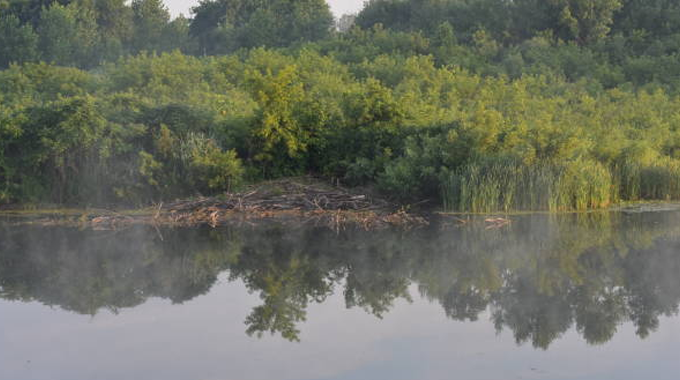
Moreover, forests support biodiversity, which contributes to the resilience of watersheds. Trees and vegetation within forests help to maintain the ecological balance, providing habitat for a variety of species that contribute to the health of the watershed. By preserving and managing forested watersheds, we ensure a sustainable and reliable water source for both human use and the environment, highlighting the interdependent relationship between forests and water resources.
Table of Content
Forests as natural water regulators, water quality improvement, erosion control, groundwater recharge, biodiversity and watershed health, human and environmental benefits, conservation and management strategies, challenges and future directions, type of watershed management.
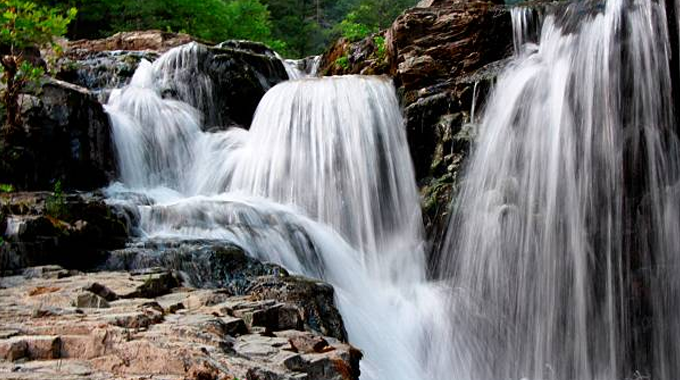
Forests play a pivotal role in the natural regulation of water within watersheds. Their dense vegetation and complex root systems absorb rainfall, which helps to moderate the flow of water. By slowing down runoff, forests reduce the risk of floods and ensure a more steady release of water over time. This process is crucial in mitigating the impacts of droughts, as it maintains a consistent flow into rivers and streams even during dry periods. In essence, forests act as natural water regulators, balancing the water cycle and protecting both ecosystems and human communities from extreme weather conditions.
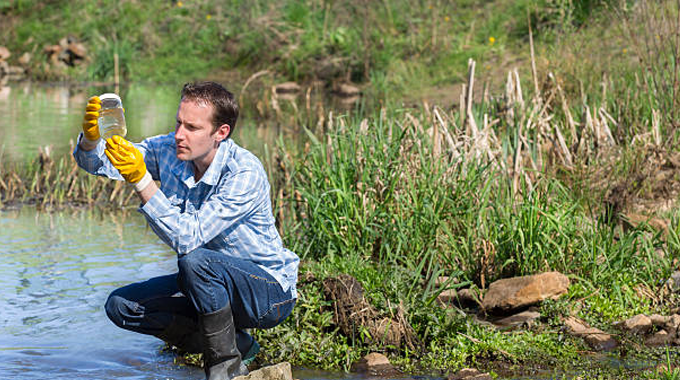
Forests significantly improve water quality through natural filtration processes. The vegetation and forest floor trap pollutants and sediments, preventing them from entering water bodies. The roots and organic matter in the soil play a critical role in breaking down contaminants, which results in cleaner water. This filtration mechanism ensures that the water flowing into rivers, lakes, and reservoirs is of higher quality, which is essential for drinking water supplies, agriculture, and aquatic life. By maintaining clean water, forests provide an indispensable service that supports the health and well-being of both the environment and human populations.
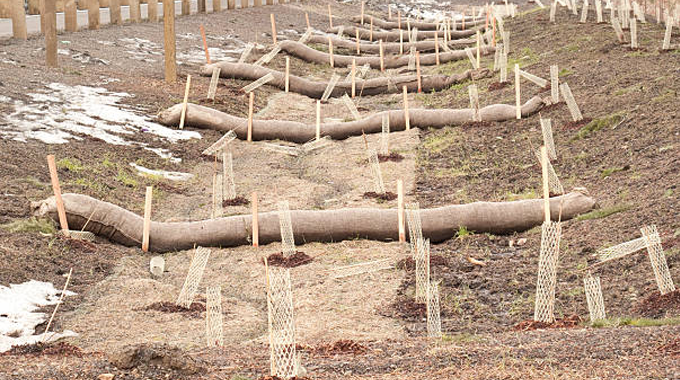
The canopy cover provided by forests protects the soil from the direct impact of rainfall, which helps to prevent erosion. The roots of trees and plants stabilize the soil, reducing the amount of sediment that can be washed away into water bodies. This is crucial for maintaining the integrity of the landscape and preventing sedimentation in rivers and lakes, which can lead to reduced water quality and habitat destruction. Forests act as a natural barrier against soil erosion, preserving the land and ensuring that water bodies remain clear and free of excessive sediment.
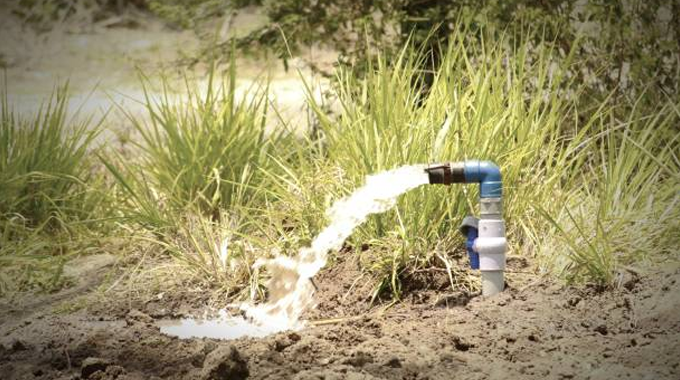
Forests contribute to groundwater recharge by facilitating the infiltration of rainwater into the soil. The presence of trees and vegetation enhances the soil’s ability to absorb water, allowing it to percolate down to replenish underground aquifers. This process is vital for maintaining groundwater levels, which are a critical source of fresh water for many communities. By supporting groundwater recharge, forests ensure a sustainable supply of water that can be accessed during times of scarcity, thus playing a crucial role in long-term water management strategies.
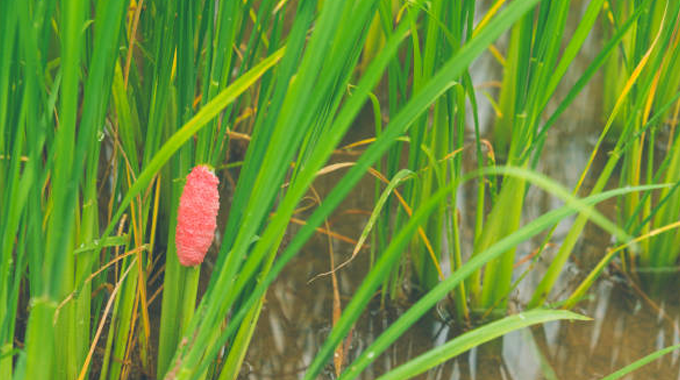
The biodiversity within forested watersheds is essential for the overall health and functionality of these ecosystems. A diverse range of plant and animal species contributes to the stability and resilience of the watershed. Each species plays a unique role, from pollination and seed dispersal to nutrient cycling and pest control. This biodiversity ensures that the ecosystem can adapt to changes and recover from disturbances, maintaining the balance needed for a healthy watershed. The ecosystem services provided by diverse forest species are integral to the sustainability of water resources and the broader environment.
Forested watersheds provide numerous benefits to both human communities and the environment. They ensure a sustainable supply of clean water, which is essential for drinking, agriculture, and industry. The regulation of water flow and improvement of water quality support the needs of human populations, enhancing the quality of life and economic stability. Additionally, the ecological balance maintained by forests fosters a resilient environment that can withstand and recover from natural and human-induced changes. These benefits underscore the importance of preserving forested watersheds for the well-being of current and future generations.
Effective conservation and management strategies are crucial for preserving the role of forests in watershed management. Best practices include sustainable forestry, reforestation, and the protection of existing forested areas. Policies and initiatives that support forest and watershed management are essential for ensuring long-term sustainability. Collaboration between governments, local communities, and environmental organizations is necessary to promote the health and vitality of forests. Implementing these strategies helps safeguard the essential functions that forests provide, ensuring that they continue to enhance water sustainability.
Forested watersheds face numerous threats, including deforestation, climate change, and pollution. Addressing these challenges requires a comprehensive approach that combines conservation efforts with innovative strategies for enhancing water sustainability. Future directions include the development of advanced monitoring systems, the implementation of adaptive management practices, and increased public awareness about the critical role of forests in watershed management. By confronting these challenges, we can ensure that forests continue to support water sustainability and meet the diverse needs of ecosystems and human societies.
Headwater Watersheds
These are the uppermost parts of a watershed, where streams and rivers originate. Headwater watersheds are typically small and may consist of multiple tributaries that converge to form larger streams and rivers. They are crucial for maintaining the flow and quality of water downstream.
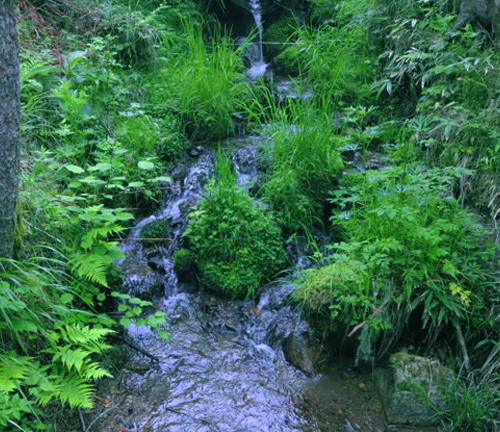
Riverine Watersheds
Riverine watersheds encompass the entire drainage area of a river and its tributaries. These watersheds are often extensive and can cover large geographical regions. They play a significant role in collecting and conveying water from various smaller streams and rivers into a major river.
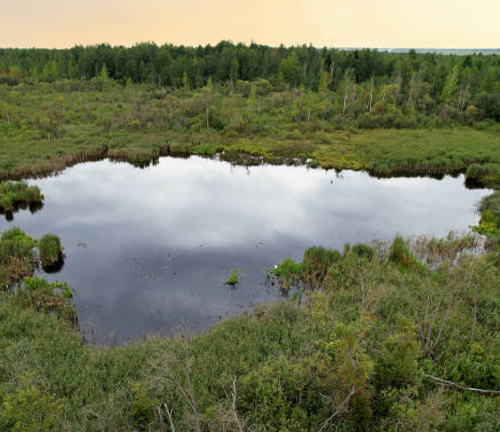
Closed or Endorheic Watersheds
These watersheds do not drain into the ocean or a sea but rather into inland bodies of water such as lakes or basins. The water in endorheic watersheds evaporates or seeps into the ground, as there is no outlet to the sea. Examples include the Great Basin in the United States.

Frequently Asked Question (FAQs)
1. What is the role of forests in watershed management? Forests play a critical role in watershed management by regulating water flow, improving water quality, preventing soil erosion, and supporting groundwater recharge. They act as natural water filters and sponges, maintaining a balanced water cycle and ensuring sustainable water resources.
2. How do forests regulate water flow in a watershed? Forests regulate water flow by absorbing rainfall through their vegetation and soil. This process slows down runoff, reduces the risk of floods, and ensures a steady release of water into streams and rivers, which helps mitigate the impacts of droughts.
3. In what ways do forests improve water quality? Forests improve water quality by filtering pollutants and sediments through their root systems and forest floor. Organic matter and vegetation trap contaminants, ensuring that cleaner water enters rivers, lakes, and reservoirs.
4. How do forests help prevent soil erosion? Forests help prevent soil erosion by providing canopy cover that reduces the impact of rainfall on the soil and by stabilizing the soil with their root systems. This reduces the amount of sediment that can be washed into water bodies, maintaining clearer and healthier waterways.
5. What is groundwater recharge, and how do forests contribute to it? Groundwater recharge is the process by which water percolates down through the soil to replenish underground aquifers. Forests enhance this process by facilitating the infiltration of rainwater through their root systems and soil structure, maintaining groundwater levels.
6. Why is biodiversity important in forested watersheds? Biodiversity in forested watersheds is essential for ecosystem stability and resilience. Diverse plant and animal species contribute to various ecosystem services, such as pollination, nutrient cycling, and pest control, which are crucial for the overall health and functionality of the watershed.
7. What are the benefits of forested watersheds to human communities? Forested watersheds provide numerous benefits to human communities, including a sustainable supply of clean water, reduced risk of floods and droughts, and improved water quality. These benefits support agriculture, industry, and domestic needs, enhancing the quality of life.
8. What are some best practices for conserving forested watersheds? Best practices for conserving forested watersheds include sustainable forestry practices, reforestation, protecting existing forests, and implementing policies that support watershed management. Collaboration between governments, local communities, and environmental organizations is also essential.
9. What challenges do forested watersheds face? Forested watersheds face challenges such as deforestation, climate change, pollution, and unsustainable land use practices. These threats can degrade the quality and functionality of watersheds, impacting water resources and ecosystem health.
10. What future strategies can enhance water sustainability through forest management? Future strategies for enhancing water sustainability through forest management include developing advanced monitoring systems, implementing adaptive management practices, increasing public awareness, and promoting policies that support sustainable forest and watershed management.
Download Access Form
To access the download, we kindly ask you to provide your information in the form below. Your privacy matters to us, and we assure you that your information will be kept confidential and used only for the purpose of providing you with the download.

Gilbert Griffin is a forest management expert specializing in sustainable practices, forest health, conservation, and land management. With extensive knowledge in pest control, disease management, and habitat restoration, Gilbert develops strategies to preserve forest ecosystems and biodiversity. Passionate about the natural world, Gilbert adapts to changes in forest management and stays updated through continuous learning. Gilbert also provides seasonal advice to optimize forest care throughout the year.
Leave your comment
Related posts.
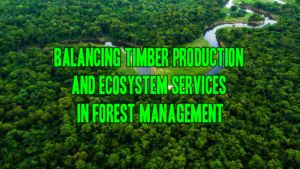
Balancing Timber Production and Ecosystem Services in Forest Management

How to Implement Sustainable Forestry Practices on Your Land

Managing Forests for Multiple Uses: Timber, Recreation, and Wildlife

Future of Sustainable Forestry Practices

What Are the Benefits of a Managed Forest?

The Economics of Forest Management

Essential Forest Disease Control Methods Every Forester Should Know

Sustainable Wood: Green Forestry Solutions
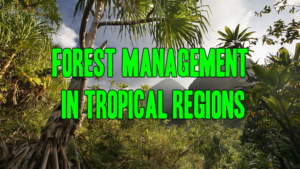
Forest Management in Tropical Regions
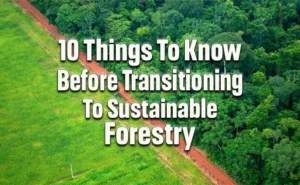
10 Things to Know Before Transitioning to Sustainable Forestry

Worst Sustainable Forestry Myths You Need to Stop Believing
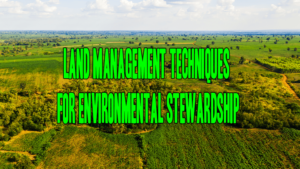
Land Management Techniques for Environmental Stewardship

Essay on Water Conservation and Management
Students are often asked to write an essay on Water Conservation and Management in their schools and colleges. And if you’re also looking for the same, we have created 100-word, 250-word, and 500-word essays on the topic.
Let’s take a look…
100 Words Essay on Water Conservation and Management
Introduction.
Water is a precious resource that sustains life on earth. However, water scarcity is a growing issue due to population increase and climate change. Therefore, water conservation and management is crucial.
What is Water Conservation?
Water conservation involves using water efficiently to reduce unnecessary water usage. It can be as simple as turning off the tap while brushing your teeth or using a rain barrel to collect rainwater for garden use.
Water Management
Water management includes strategies and activities to manage water resources. It involves planning, distributing, and optimizing the use of water resources to meet human and environmental needs.
Importance of Water Conservation and Management
Conserving and managing water ensures a sustainable future. It reduces water stress, protects the environment, and saves energy. It also promotes health and well-being by ensuring access to clean water.
250 Words Essay on Water Conservation and Management
Water is a fundamental resource for life, yet its availability is increasingly strained due to population growth, climate change, and pollution. This necessitates effective conservation and management strategies.
Understanding Water Conservation
Water conservation refers to the careful use and preservation of water resources. It involves both the strategies and activities to manage fresh water as a sustainable resource to protect the environment and meet current and future human needs. This includes practices like reducing water usage, recycling water, and improving water management systems.
The Need for Water Management
Water management is crucial to ensure the equitable distribution of water, maintain its quality, and balance its availability amidst seasonal variations. It includes the planning, developing, distributing and managing the optimum use of water resources. Effective water management can prevent conflicts over water scarcity and ensure that all sectors of society have access to this vital resource.
Strategies for Conservation and Management
Strategies for water conservation and management can range from individual actions to large-scale policy initiatives. On a personal level, individuals can conserve water by reducing consumption and recycling water. On a larger scale, governments and organizations can implement policies promoting water conservation, invest in infrastructure to reduce water loss, and engage in international cooperation to manage shared water resources.
In conclusion, water conservation and management are critical for sustaining life, maintaining ecological balance, and ensuring social equity. By understanding and implementing effective strategies, we can ensure the preservation of this vital resource for future generations.
500 Words Essay on Water Conservation and Management
Water conservation refers to the efficient use and preservation of water resources. It involves strategies and activities to manage freshwater supply, preventing water pollution, and reducing water consumption. Conservation is essential because only about 2.5% of the Earth’s water is fresh, and less than 1% is accessible.
The Importance of Water Management
Water management is a broad concept that encompasses the planning, development, distribution, and optimization of water resources. It involves a multitude of activities, including irrigation management, flood control, supply forecasting, and water quality assurance. Effective water management can help mitigate the impacts of water scarcity, ensuring equitable and sustainable use of this precious resource.
Water Conservation Strategies
Water management techniques.
Effective water management requires a combination of traditional practices and innovative technologies. Techniques like rainwater harvesting, watershed management, and aquifer recharge can help increase freshwater availability. On the technological front, advanced hydrological models, remote sensing, and Geographic Information Systems (GIS) can enhance water resource planning and management.
Role of Policy and Legislation
Governments have a significant role in water conservation and management through policy-making and legislation. Policies should promote sustainable water use, protect water rights, and regulate water pollution. Legislation can enforce water-saving measures, penalize wasteful practices, and incentivize water-efficient technologies.
The Future of Water Conservation and Management
Water conservation and management is a pressing issue that requires immediate attention. As we face a future with potentially severe water shortages, it is essential to adopt effective strategies for conservation and implement robust water management techniques. By doing so, we can ensure a sustainable and equitable distribution of water resources for future generations.
That’s it! I hope the essay helped you.
If you’re looking for more, here are essays on other interesting topics:
Happy studying!
Leave a Reply Cancel reply
Your email address will not be published. Required fields are marked *
Your Article Library
Watershed management: aspects, objective and various measures.
ADVERTISEMENTS:
Watershed Management: Aspects, Objective and Various Measures!
Water management means properly organizing the hydrosphere in order to prevent major water crisis in future.
Important aspects of water management include:
(i) Hydrosphere
(ii) Hydrological cycle
(iii) Exchange of water
(iv) Transportation of water and irrigation.
Water shed is an area bounded by the divide line of water flow. It may be drainage basin or stream. The management of rainfall and resultant runoff is based on a natural unit called water shed. The Himalayas are one of the most critical water sheds in the world. Our water regimes in the mountain ranges are threatened resulting in the depletion of water resources.
The damage of reservoirs and irrigation systems and misuse of Himalayan slopes are mounting as are the costs for control measures during the flood season every year. The hydroelectric power potential can be harnessed from Himalayan water sheds only when proper control measures are taken.
These include soil and land use survey, soil conservation in catchments of River valley projects and flood prone rivers, afforestation, social forestry programmes, drought prone area development programme, desert development and control of shifting cultivation.
The watersheds are very often found to be degraded due to uncontrolled, unplanned and unscientific land use activities. Organizing, deforestation, mining, construction activities, industrialization, shifting cultivation, natural and artificial fires, soil erosion and ignorance of local people have been responsible for degradation of various watersheds.
Water loss can also be prevented by certain good agricultural practices. They are:
(i) Growing luxuriant vegetation on slopes and adopting no ploughing cultivation during rains.
(ii) Spreading and retaining crop residues on the fields.
(iii) Provision of contour ditches shall prevent water loss.
(iv) Construction of small check dams across rivulets.
(v) Maintaining of wetlands like marshes and bogs as such.
Objectives of Watershed Management :
Rational utilization of land and water sources for optimum production causing minimum damage to the natural resources is known as watershed management.
The main goal of Watershed Management is to implant the sustainable management of natural resources to improve the quality of living for the population is to be accomplished by the following objectives:
1. Improvement and restoration of soil quality and thus, raising productivity rates.
2. Supply and securing of clean and sufficient drinking water for the population.
3. Improvement of infrastructure for storage, transport and agricultural marketing.
4. To manage the watershed for beneficial developmental activities like domestic water supply, irrigation, hydropower generation etc.
5. To minimize the risks of floods, droughts and landslides.
6. To develop rural areas in the region with clear plans for improving the economy of the regions.
Watershed Management Practices :
In the fifth year plan, watershed management approach was included with a number of programs for it and a national policy was developed. In watershed management the aspects of development are considered with regard to availability of the resources.
The practices of conservation and development of land and water are taken up with respect to their suitability for people’s benefit as well as sustainability.
Various measures taken up for management include following:
1. Socio-economic Aspects:
Understand the role of land use management and its impact on water resources conservation, livelihood, ecosystem and water resources sources in selected different land use watersheds.
2. Water Governance Aspect:
Identify and promote appropriate institutions/organizations and develop support mechanisms in each of selected watershed to enhance the desired watershed management for sustainable water resources development, uses and conservation.
3. Water harvesting:
Proper storage of water is done with provision for use in dry seasons in low rainfall areas. It also helps in moderation of floods.
4. Afforestation and agro-forestry:
In watershed development, afforestation and crop plantation play a very important role. They help to prevent soil erosion and retention of moisture. In high rainfall areas, woody trees are grown in between crops to substantially reduce the runoff and loss of fertile soil.
In Dehradun trees Eucalyptus, Leucaena and grasses like Chrysopogon are grown along with maize or wheat to achieve the objectives. Woody trees grown successfully in such agro-forestry programs include Sheesham, Teak and Keekar which have been used in watershed areas of river Yamuna.
5. Mechanical measures for reducing soil erosion and runoff losses:
Several mechanical measures like terracing, bunding, bench terracing, no-till farming, contour cropping, strip cropping etc. are used minimize runoff and soil erosion particularly on the slopes of watersheds. Bunding has proved to be a very useful method in reducing runoff, peak discharge and soil loss in Dehradun and Siwaliks.
6. Scientific mining and quarrying:
Due to improper mining, the hills lose stability and get disturbed resulting in landslides, rapid erosion etc. Contour trenching at an interval of one meter on overburdened dump, planting some soil binding plants land draining of water courses in the mined area are recommended for minimizing the destructive effects of mining in watershed areas.
7. Public participation:
People’s involvement including the farmers and tribal is the key to the success of any watershed management program, particularly the soil and water conservation. People’s cooperation as well as participation has to be ensured for the same.
The communities are to be motivated for protecting a freshly planted areas and maintaining a water harvesting structure implemented by the government or some external agency (NGO) independently or by involving the locale people. Properly educating the people about the campaign and its benefits or sometimes paying certain incentives to them can help in effective people’s participation.
Successful watershed management has been done at Sukhomajri, Panchkula and Haryana through active participation of the local people. Watershed management in Himalayan region is of vital importance since most of the watersheds of our country lie there.

Related Articles:
- Measures taken by Government for the Development of Dryzone Agriculture in India
- Watershed Management in Rural India: People’s Participation in
Watershed Management
No comments yet.
Leave a reply click here to cancel reply..
You must be logged in to post a comment.
Essay On Water Management
500 words essay on water management.
Water management refers to activities that plan, develop, distribute and manage the optimum use of water resources. Everyone can do this from local authorities to individuals at home. Good water management allows access to safe water for everyone. Through an essay on water management, we will go through it in detail.

Importance of Water Management
Water management impacts various aspects of our lives. As water is common, we do not think much of its management. But, if we ask the deprived people, they will know the importance of water management very well.
As we require drinking water, clean drinking water is a necessity. No human can survive without water. Further, we also need water management for cleaning and washing. For instance, we bathe, wash our clothes and utensils to maintain hygiene .
Further, agriculture requires water for growing the food that we eat every day. Thus, a good water supply becomes essential. Moreover, we also enjoy swimming, boating and other leisure activities in the water.
For instance, swimming pools and more. Thus, water needs to be managed so people can enjoy all this. Most importantly, water management ensures that our rivers and lakes do not contaminate. Thus, it helps maintain biodiversity.
Ways of Water Management
There are various ways available through which we can manage water. The major ways of water management include recycling and treating wastewater. When we treat wastewater , it becomes safe to be piped back to our homes.
Thus, we use it for drinking, washing and more. In addition, an irrigation system is a very good way of water management. It involves a good quality irrigation system which we can deploy for nourishing crops in drought-hit areas.
By managing these systems, we can ensure water does not go to waste and avoid unnecessarily depleting water supplies. Most importantly, conserving water is essential at every level.
Whether it is a big company or a small house, we all must practise water management. The big industries use gallons of water on a daily basis. At homes, we can conserve water by using it less.
Further, it also applies to our way of consumption of products. A large amount of water goes into the production of cars or a simple item like a shirt. Thus, we must not buy things unnecessarily but consciously.
It is also essential to care for natural supplies like lakes, rivers , seas and more. As you know, these ecosystems are home to a variety of organisms. Without its support, they will go extinct. Thus, water management becomes essential to ensure we are not polluting these resources.
It is also crucial to ensure that everyone gets access to enough water. Some parts of the world are completely deprived of clean water while some have it in abundance. This is unfair to those who do not get it which also causes many deaths. Thus, we need water management to avoid all this.
Get the huge list of more than 500 Essay Topics and Ideas
Conclusion of the Essay on Water Management
If we look at the current situation of water depletion, it is evident that we are in dire need of water management. We must come together to do our best to ensure that everyone is getting access to safe water daily so that we can lead happy lives.
FAQ of Essay on Water Management
Question 1: What is meant by water management?
Answer 1: Water management refers to the control and movement of water resources for minimizing damage to life and property. Moreover, it is to maximize effective beneficial use.
Question 2: What are the ways of water management?
Answer 2: There are numerous ways of water management. Some of them are the treatment of wastewater, deploying good irrigation methods, conserving water whenever possible. Further, we must also care for natural sources of water like rivers, seas, lakes and more.
Customize your course in 30 seconds
Which class are you in.

- Travelling Essay
- Picnic Essay
- Our Country Essay
- My Parents Essay
- Essay on Favourite Personality
- Essay on Memorable Day of My Life
- Essay on Knowledge is Power
- Essay on Gurpurab
- Essay on My Favourite Season
- Essay on Types of Sports
Leave a Reply Cancel reply
Your email address will not be published. Required fields are marked *
Download the App

Achieving Comprehensive Water Productivity Improvement: A Multi-Objective Simulation-Optimization Model for Water Productivity-Oriented Irrigation Water Management
55 Pages Posted: 13 Aug 2024
China Agricultural University
Chenglong Zhang
affiliation not provided to SSRN
Improving water productivity (WP) from multiple perspectives is crucial for irrigated agriculture in arid areas, particularly due to challenges such as low crop WP, limited economic returns, and secondary soil salinization. In this study, a multi-objective simulation-optimization model is developed for maximizing irrigation water productivity (IWP), economic water productivity (EWP), and nutritional water productivity (NWP) concurrently. Moreover, the EPIC (Environmental Policy Integrated Climate) crop growth model and water-salt balance equations are incorporated to readily simulate daily physical processes of crop growth and dynamic water and salt movement. The parameters of the model that simulate these physical processes are parameterized and calibrated based on existing studies. Then, it’s applied to a case study in the Jiefangzha Irrigation Subarea to optimize irrigation water allocation for maize, sunflower, and spring wheat. The study area is divided into 44 irrigation subsystems to readily reflect the spatial distribution of input parameters, which are regarded as basic irrigation decision-making units. This model is finally solved by the NSGA-III algorithm where the diversity of the initial population is improved with an Elite Opposition-Based Learning (EOBL) strategy, thus optimal solutions can be generated for supporting high-efficiency irrigation water use. Results indicate that (1) optimized objectives values are 6.72 Yuan/m3, 2.36 Kg/m3, 20041.7 Kcal/m3, and IWP improves by 32.58% compared with the status-quo. (2) There is severe salt accumulation at irrigation subsystems 41, 42, and 44, where priority will be given to planting salt-tolerant sunflowers. (3) Crop root growth processes, sowing time, and growing periods have a strong influence on the salt concentration of actual root zone. Moreover, the proposed model emphasizes the influence of dynamic water-salt movement processes on crop growth and WP. Therefore, these optimization results can provide effective guidance for agricultural production and support further analysis of the interrelationships among IWP, EWP, and NWP.
Keywords: Water productivity, Evolutionary multi-objective optimization, Salinity control, EPIC crop growth model, NSGA-III
Suggested Citation: Suggested Citation
China Agricultural University ( email )
Beijing China
Chenglong Zhang (Contact Author)
Affiliation not provided to ssrn ( email ).
No Address Available
Do you have a job opening that you would like to promote on SSRN?
Paper statistics, related ejournals, water sustainability ejournal.
Subscribe to this fee journal for more curated articles on this topic
Agricultural Economics eJournal
Agricultural sustainability & security ejournal, agronomy & soil science ejournal.
- Share full article

Opinion Guest Essay
Will We Have to Pump the Great Lakes to California to Feed the Nation?
Credit... Alma Haser
Supported by
By Jay Famiglietti
Dr. Famiglietti is a professor at Arizona State University and the director of science for the Arizona Water Innovation Initiative.
- Aug. 5, 2024
This essay is part of What to Eat on a Burning Planet, a series exploring bold ideas to secure our food supply. Read more about this project in a note from Eliza Barclay, Opinion’s climate editor.
Driving north through California’s Tejon Pass on Interstate 5, you spill down out of the mountains onto a breathtaking expanse of farm fields like few others in the world. Rows of almond, pistachio and citrus trees stretch as far as the eye can see, dotted by fields of grapes. Truckloads of produce zoom by, heading for markets around the country.
The Central Valley of California supplies a quarter of the food on the nation’s dinner tables. But beneath this image of plenty and abundance, a crisis is brewing — an invisible one, under our feet — and it is not limited to California.
Coast to coast, our food producing regions, especially those stretching from the southern Great Plains across the sunny, dry Southwest, rely heavily and sometimes exclusively on groundwater for irrigation. And it’s disappearing — fast.
What happens to the nation’s food production if the groundwater runs out altogether? Unless we act now, we could soon reach a point where water must be piped from the wetter parts of the country, such as the Great Lakes, to drier, sunnier regions where the bulk of the nation’s food is produced. No one wants unsightly pipelines snaking across the country, draining Lake Michigan to feed the citrus groves of the Central Valley. But that future is drawing closer by the day, and at some point, we may look back on this moment and wish we’d acted differently.
For over a century, America’s farmers have overpumped groundwater, and now, as the world warms and the Southwest becomes drier, the situation is only growing more dire. Rivers are slowing to a trickle, water tables are falling, land is sinking, and wells are drying up. Each year, roughly 25,000 more farmers fallow their fields, putting both food and water security in the United States at risk.
We are having trouble retrieving the article content.
Please enable JavaScript in your browser settings.
Thank you for your patience while we verify access. If you are in Reader mode please exit and log into your Times account, or subscribe for all of The Times.
Thank you for your patience while we verify access.
Already a subscriber? Log in .
Want all of The Times? Subscribe .
Advertisement

- news events
- weekly king tide forecast 10
Meetings & Notices
Did you know, water conservation, flood protection, restoration, governing board, conservation, public advisory, lake okeechobee, news archive, recent posts, save the date: resiliency coordination forum on wednesday, september 4, 2024, upcoming workshops for the lower kissimmee basin stormwater treatment area project, dyk: flood control infrastructure protects our communities and water supplies.
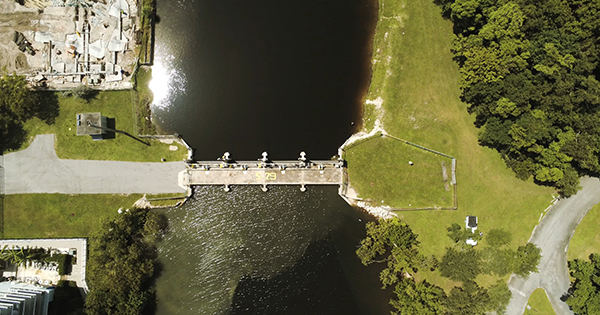
With approximately 700 miles of shoreline and 40+ gravity coastal structures upstream of tidally influenced canals, the South Florida Water Management District (SFWMD)’s water management mission is influenced by sea levels. Along with rainfall and surge, high tide events also contribute to flood risks in South Florida. The variation in strength and direction of the gravitational pull of the moon, especially during the new and full moon phases in the Fall, contributes to King Tide occurrences.
As the 2024 King Tide Season approaches, SFWMD is continuing efforts for the monitoring, operational response and documentation of these events.
Extreme high tides are predicted by the National Oceanographic and Atmospheric Administration to peak above 2.5-3.0 feet Mean Lower Low Water along the South Florida Coast during the following days (peak varies by location):
- August 19-23 (Full Moon)
- September 18-21 (Full Moon)
- October 1-5 (New Moon)
- October 16-20 (Full Moon)
- October 30 - November 4 (New Moon)
- November 13-18 (Full Moon)
- November 29-30 (New Moon)
Weekly Tidal Outlook Forecast With the onset of the 2024 King Tide season, SFWMD will be publishing the weekly Tidal Outlook Forecast, every Monday, beginning today, August 12, to report conditions – such as wind strength and direction, ocean currents – that can cause tides to occur higher or lower than predicted at certain locations. These weekly updates are intended to be informational for interested stakeholders and the public. To subscribe to receive these weekly updates, please visit our email signup page, enter your email address and check the "King Tide Forecast” option.
Enhanced Tidal Forecast in Partnership with University of Miami SFWMD and the University of Miami (UM) - Rosenstiel School of Marine, Atmospheric, and Earth Science partnered in 2022 to improve tidal predictions available from the National Oceanic and Atmospheric Administration. These enhanced predictions, which form the foundation of the Weekly Tidal Outlook Forecast, utilize dynamic model inputs that account for sea level rise, meteorological conditions, and oceanic factors (i.e., wind, wind direction, sea surface temperature, and swell energy).
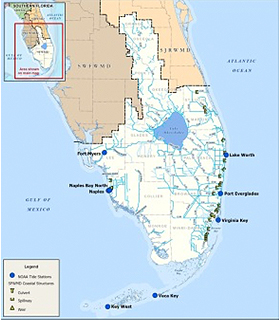
Automated king tide forecasts are now available on the SFWMD’s Resilience Metrics Hub for seven tidal stations along South Florida’s east and west coasts:
- Virginia Key
- Port Everglades
- Naples/Naples Bay North

COMMENTS
Essay # 3. Principles of Watershed Management: Main principles of watershed management based on resource conservation, resource generation and resource utilisation are: 1. Utilising the land based on its capability. 2. Protecting fertile top soil. 3. Minimising silting up of tanks, reservoirs and lower fertile lands.
The EPA offers their tips on how you can help keep your watershed clean and healthy. Conserve water every day. Take shorter showers, fix leaks & turn off the water when not in use. Don't pour toxic household chemicals down the drain; take them to a hazardous waste center. Use hardy plants that require little or no watering, fertilizers or ...
250 Words Essay on What Are the Importance of Watershed Management The Importance of Watershed Management. Watershed management is crucial for many reasons. One important aspect is that it helps in protecting our sources of water. A watershed is an area where all the rainwater and snowmelt flow into a common body of water, like a river, lake ...
Watershed management is the study of the relevant characteristics of a watershed aimed at the sustainable distribution of its resources and the process of creating and implementing plans, programs and projects to sustain and enhance watershed functions that affect the plant, animal, and human communities within the watershed boundary. [1] Features of a watershed that agencies seek to manage to ...
Watershed management may include goals and processes such as reducing the amount of pesticides and fertilizers that wash off farm fields and into nearby waterbodies. Watershed management is closely linked to conservation. Watershed management is much more than a job allotted to the county board or office. It's an environmental policy that ...
Water is critically important to most facets of human life socially, culturally, spatially, politically, financially, and ecologically. Consequently, managing water holistically is complex and challenging. Integrated watershed management calls for scientific and engineering interventions and socio-economic considerations to improve watershed resilience to both natural disturbances and human ...
The concept of watershed management has existed for millennia. The Atharva Veda text from 800 BC contains what may well be the first written reference to watershed management. Atharva Veda verse 19, 2.1 states that: "one should take proper managerial action to use and conserve water from mountains, wells, rivers and also rainwater for use in drinking, agriculture, industries" (Chandra 1990).
Watershed management can be used to identify areas for carbon storage and sequestration by forests and trees and to reduce deforestation and forest degradation by limiting agricultural expansion and the conversion of forests to pasture lands. There is a high degree of overlap between the key principles of watershed management and the REDD+ ...
A watershed is an area of land draining. into a common body of water, such as a river, wetland, reservoir, or ocean. Rain that falls on land ows to lower. elevations and toward a common body of ...
Enhance capacities to undertake risk-sensitive, sustainable watershed management planning in urban areas. Promote innovative approaches to overcome capacity limitations, such as fostering public-private sector partnerships. Support community and civil society involvement in watershed planning processes to.
The problem of watershed management has mixed impacts, mixed institutional jurisdictions, and mixed signals as to what are benefits and costs. An integrated and multi-disciplinary approach is needed. Understanding the sociology of watersheds is crucial because in many cases, groups and communities inhabiting the upper watersheds tend to be both ...
The plan should contain the following guidelines for the purpose of offering the best solution for a sustainable watershed management plan (Heathcote 8). These guidelines should include the following. First, depletive water utilization should be limited to about 50%. This will help reduce water depletion levels to manageable levels.
Watershed Management with Hydro-Economic Model. It is a management model that is planned and implemented within the scope of optimization studies, ... After this period, conferences, symposiums, papers and forums played an important role in changing the understanding of watershed management. Changes such as the increase in the destruction of ...
Integrated Watershed Management (IWM) is an essential concept in water resources, soil, and vegetation management emphasizing economic, social, and environmental issues. This study consisted of ...
Essay # 3. Aims and Objectives of Watershed Management: 1. To protect, conserve & improve the land resources for efficient and sustained production; 2. To protect and enhance water resource, moderate floods & reduce silting up of tanks, increase irrigation and conserve rainwater for crops and thus mitigate droughts. 3.
976 Words. 4 Pages. Open Document. Watershed Management Watersheds are the areas of the Earth's surface that drains downhill to surface water bodies large or small, watersheds have discrete boundaries established by mountains, hills and valleys, and include all lakes, rivers, wetlands, streams, and other surrounding landscape.
The report begins with definitions of watersheds and watershed management, a characterization of the problem of watershed degradation, and a short history of watershed . Watershed management approaches, policies, and operations : lessons for scaling up
What is the role of forests in watershed management? Forests play a critical role in watershed management by regulating water flow, improving water quality, preventing soil erosion, and supporting groundwater recharge. They act as natural water filters and sponges, maintaining a balanced water cycle and ensuring sustainable water resources. 2.
For example, the growing, transportation, processing, and trading of food products require large amounts of water and energy. A complete analysis is provided by the Comprehensive Assessment of Water Management in Agriculture [International Water Management Institute (IWMI), 2007]. This work demonstrates that in a business-as-usual scenario ...
Understanding Water Conservation. Water conservation refers to the efficient use and preservation of water resources. It involves strategies and activities to manage freshwater supply, preventing water pollution, and reducing water consumption. Conservation is essential because only about 2.5% of the Earth's water is fresh, and less than 1% ...
Water management means properly organizing the hydrosphere in order to prevent major water crisis in future. Important aspects of water management include: (i) Hydrosphere. (ii) Hydrological cycle. (iii) Exchange of water. (iv) Transportation of water and irrigation. Water shed is an area bounded by the divide line of water flow.
Watershed Management Essay. Watershed Management Watersheds are the areas of the Earth's surface that drains downhill to surface water bodies large or small, watersheds have discrete boundaries established by mountains, hills and valleys, and include all lakes, rivers, wetlands, streams, and other surrounding landscape.
Answer 2: There are numerous ways of water management. Some of them are the treatment of wastewater, deploying good irrigation methods, conserving water whenever possible. Further, we must also care for natural sources of water like rivers, seas, lakes and more. Share with friends. Previous. Essay on Smoking.
This year marks the tenth anniversary of the Sustainable Groundwater Management Act (SGMA). In 2014, the signing of SGMA created the first major change to California water law in a century. The legislation established a statewide framework to protect groundwater resources over time and gave local agencies control to manage their groundwater basins for long-term sustainability.
Li, Gang and Zhang, Chenglong and Huo, Zailin and Liu, Yanqi, Achieving Comprehensive Water Productivity Improvement: A Multi-Objective Simulation-Optimization Model for Water Productivity-Oriented Irrigation Water Management.
Dr. Famiglietti is a professor at Arizona State University and the director of science for the Arizona Water Innovation Initiative. Aug. 5, 2024 This essay is part of What to Eat on a Burning ...
The performance of irrigation schemes in Ethiopia is too low due to a lack of proper system management, water control structure, and strong water user association. This study aimed to assess small-scale irrigation scheme's performance and proposed alternative mitigation for improved water management.
Join the South Florida Water Management District (SFWMD) for an upcoming Resiliency Coordination Forum to promote additional collaboration on water management and resiliency initiatives between local, state, federal and tribal partners. Forum Details Date: Wednesday, September 4, 2024 Time: 9:00 a.m.
The South Florida Water Management District (SFWMD) will be hosting two Public Information Workshops on the Lower Kissimmee Basin Stormwater Treatment Area Project. Public Information Workshop Details When: Wednesday, August 28, 2024 Session 1: 2:00 p.m. - 4:00 p.m. Session 2: 5:30 p.m. - 7:30 p.m. Where: Indian River State College
With approximately 700 miles of shoreline and 40+ gravity coastal structures upstream of tidally influenced canals, the South Florida Water Management District (SFWMD)'s water management mission is influenced by sea levels. Along with rainfall and surge, high tide events also contribute to flood risks in South Florida.